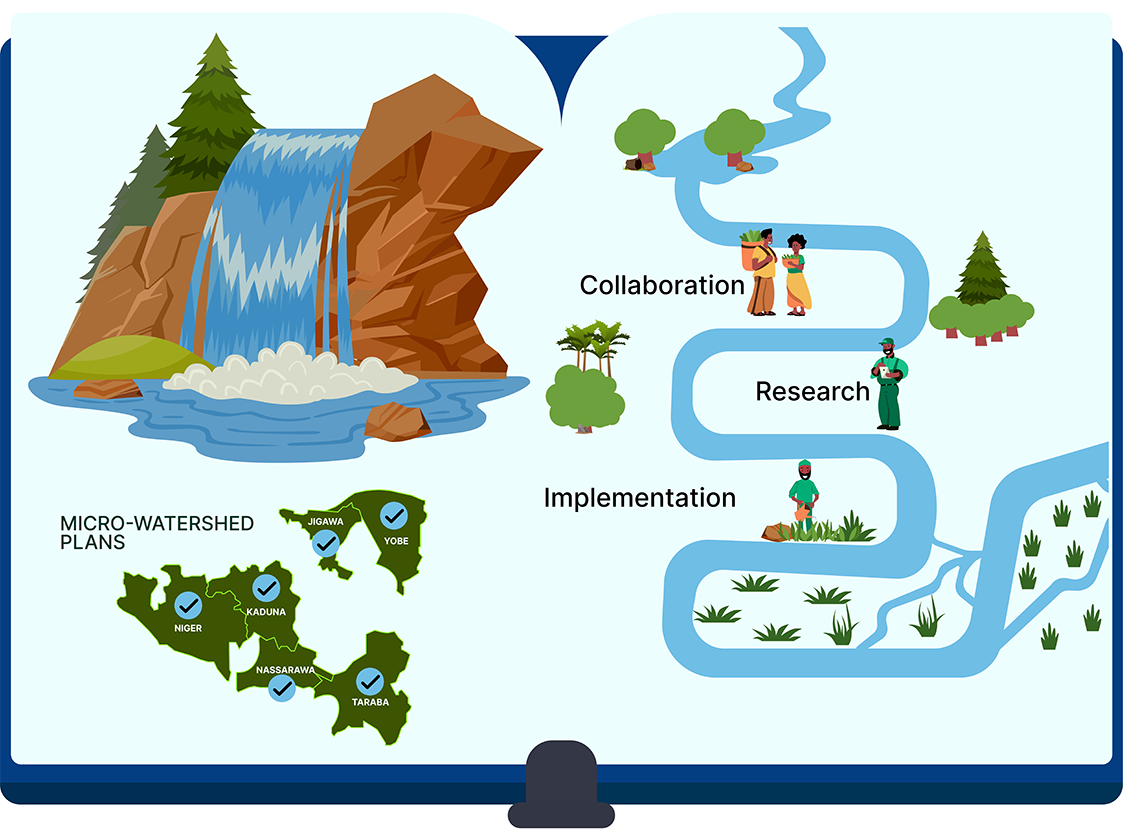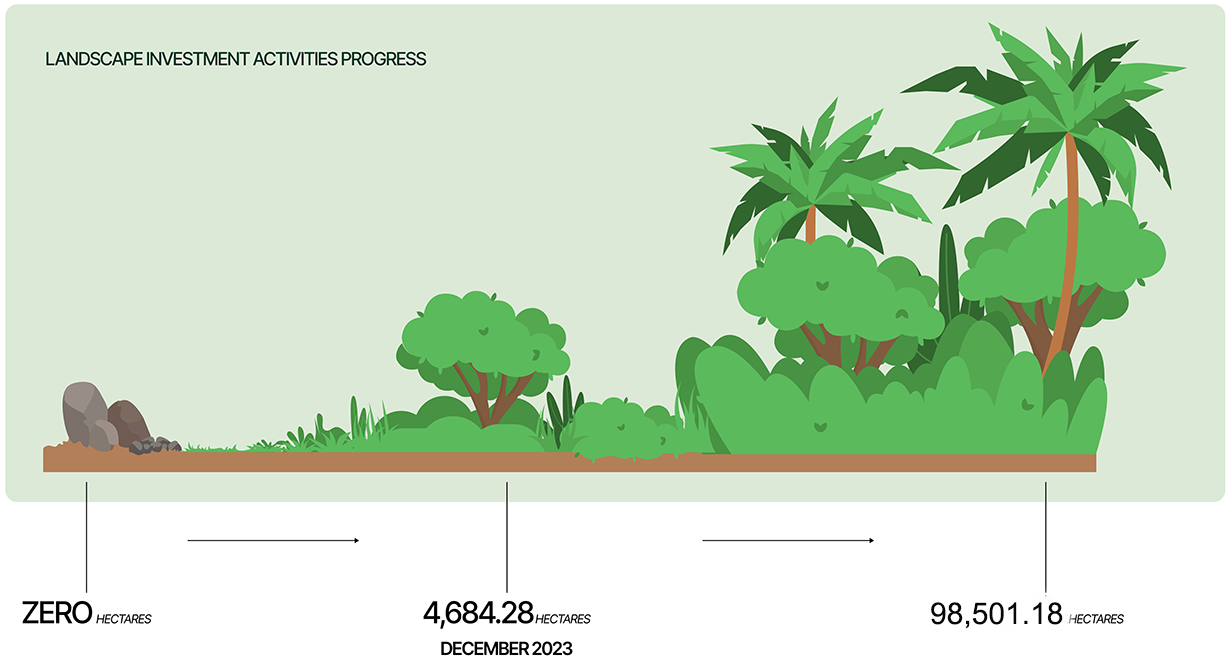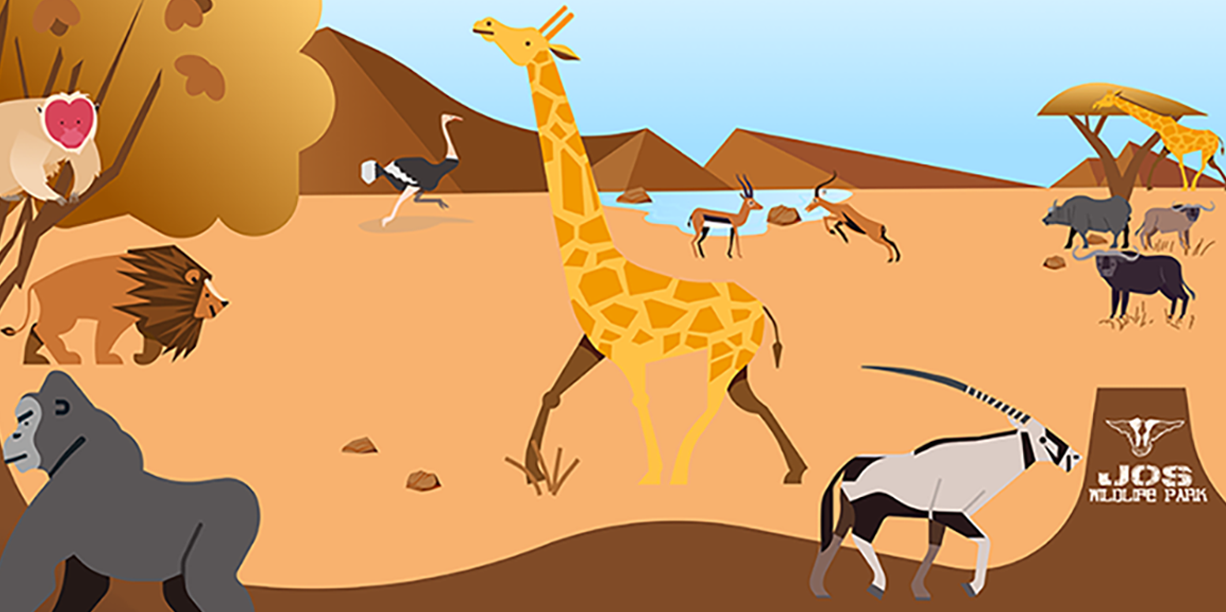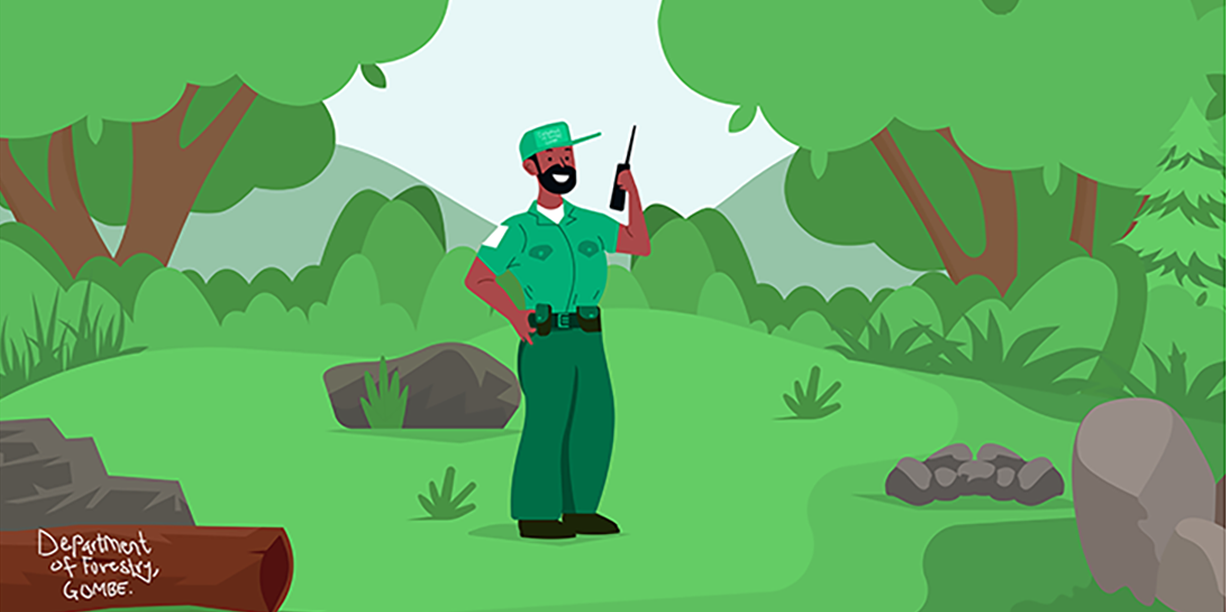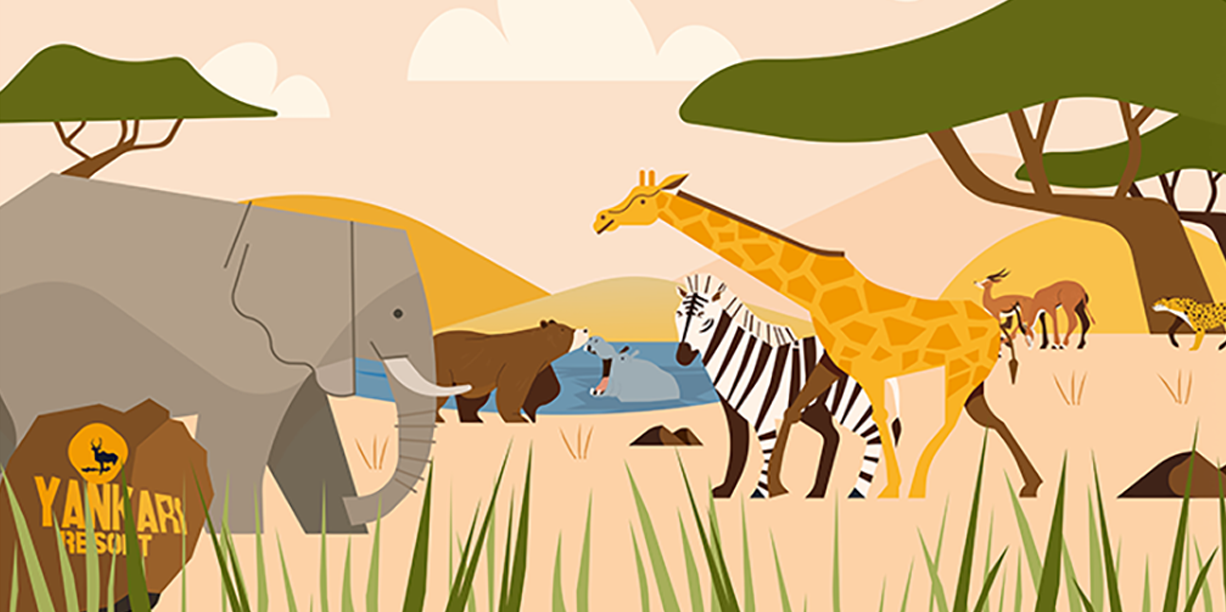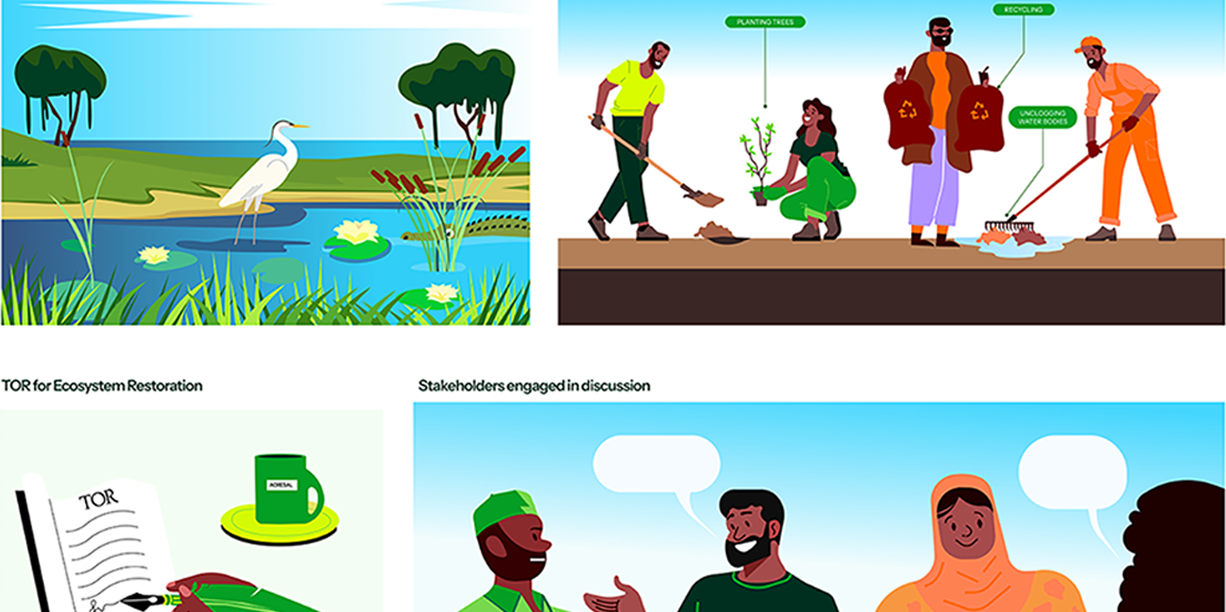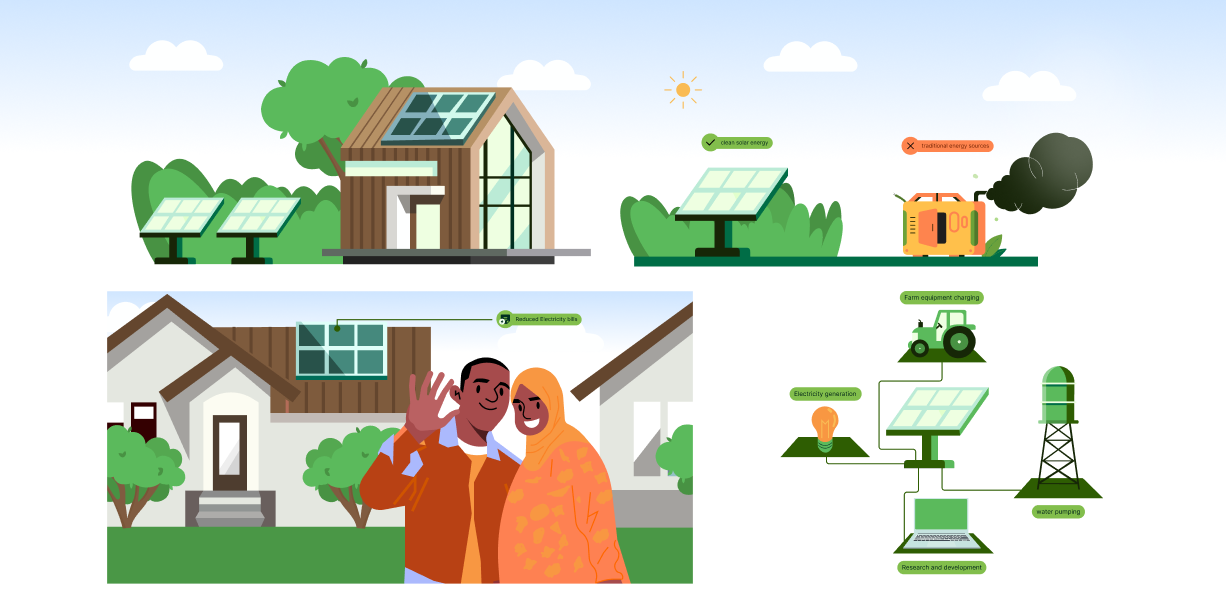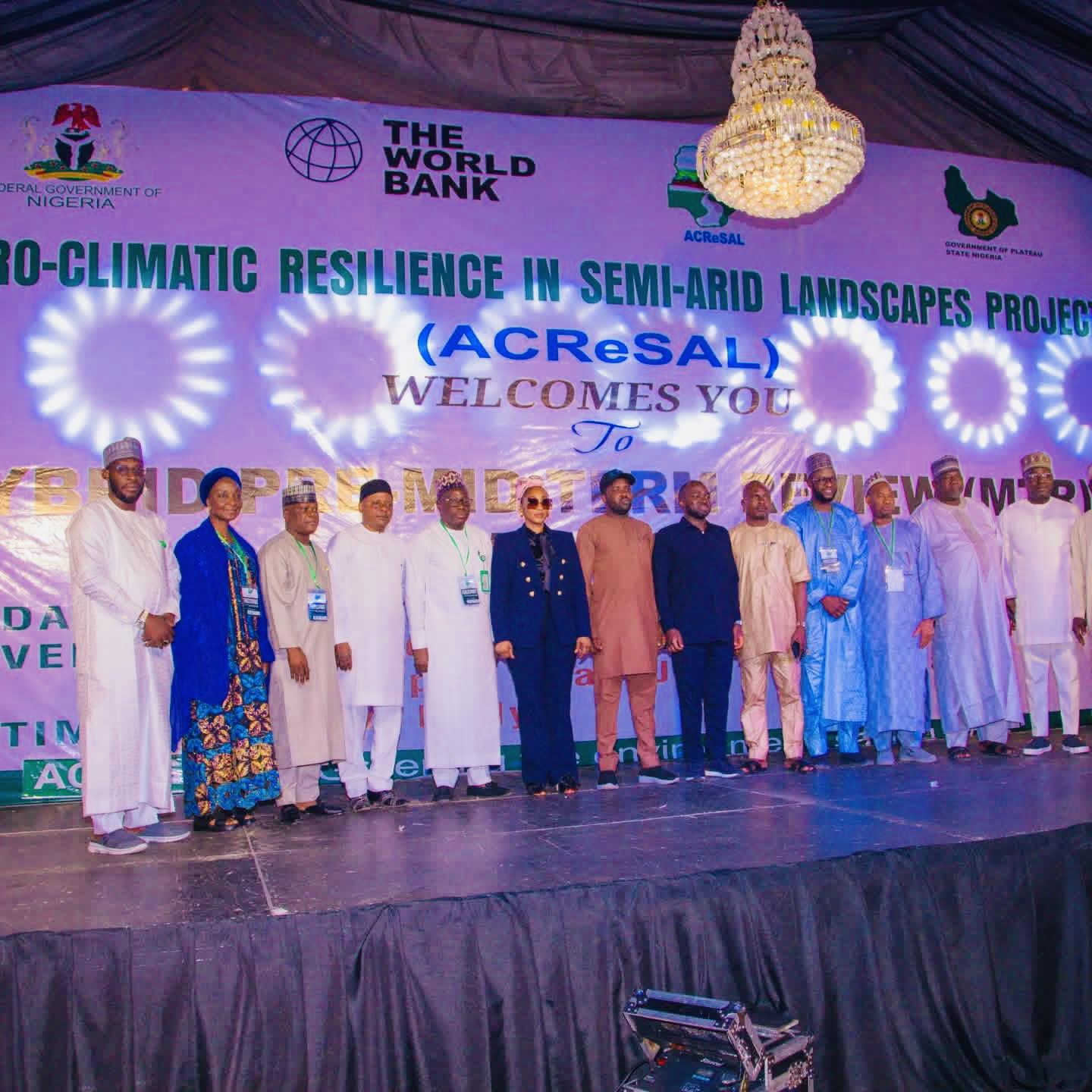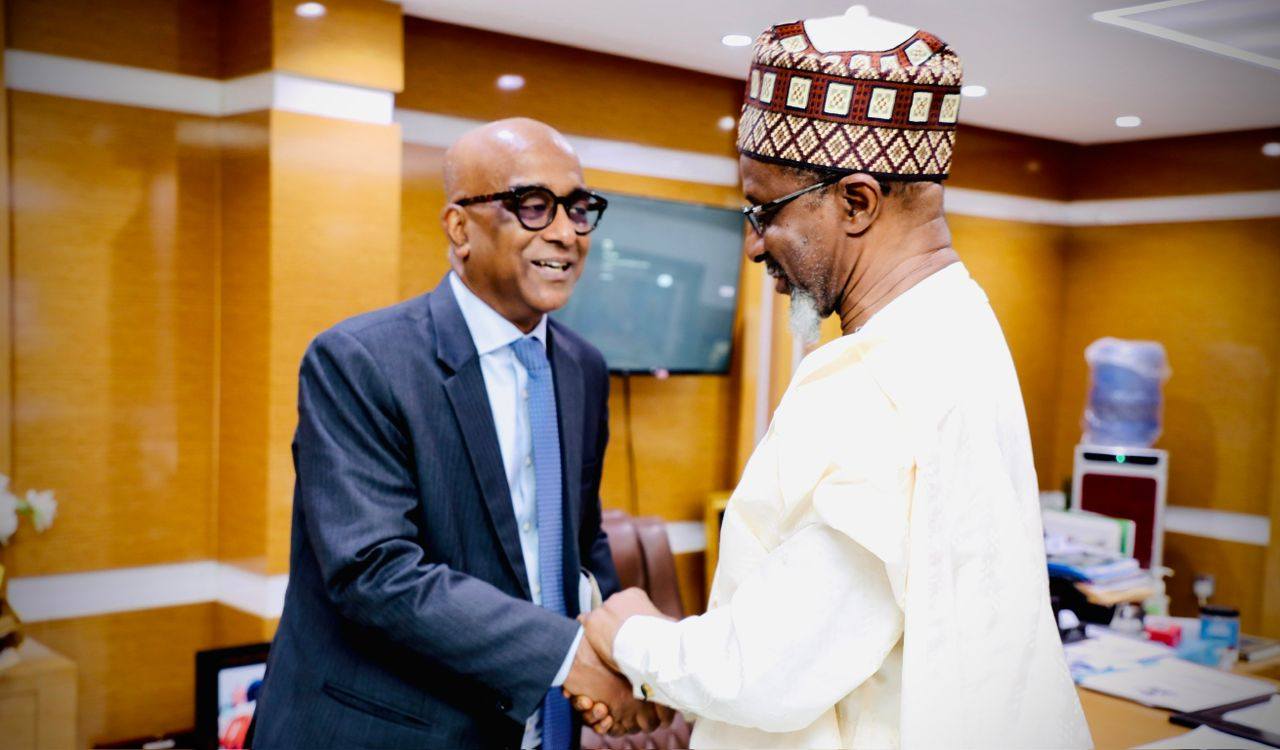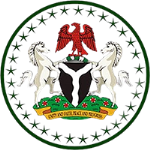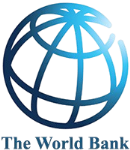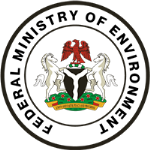
Promoting
Sustainable
Landscapes Practices.
Sustainable
Landscapes Practices.
Agro-Climatic Resilience in Semi-Arid Landscapes (ACReSAL) is a World Bank-financed project designed to tackle the pressing issues of land degradation and climate change in 19 states of Northern Nigeria and the Federal Capital Territory (FCT).
The project comprises four key components and is scheduled to run for six years, ending in 2028.

Theory of Change.
The Project Development Objective (PDO) is to increase the implementation of sustainable landscape management practices in targeted watersheds in northern Nigeria and strengthen Nigeria’s long-term enabling environment for integrated climate-resilient landscape management.
ACReSAL focuses on the long-term sustainability of land and water management in the drylands of northern Nigeria.
The Project will support scaling-up sustainable landscape management practices in northern Nigeria through strategic investments addressing natural resource degradation through an integrated ecosystem approach, building the capacity of institutions towards risk reduction and responding to climate variability, and generating information and knowledge to improve sustainable land and water management practices in Nigeria as a whole, and northern Nigeria in particular.




Activities, Outputs & Impacts
Component A
-
Component A
-
Component B
-
Component C

Rehabilitation Of Ailing Forest Reserves Buga and Kujekwa Forests, Fct

Rehabilitation Of Ailing Forest Reserves Ofejiji Okura, Dekina

Rehabilitation Of Ailing Forest Reserves Ofejiji Okura, Dekina

Rehabilitation Of Ailing Forest Reserves Olle Forest

Desilting and Evacuation of Drainages, Benue State

Desilting of Major Drains Jakara Stream, Kano Metropolis, Kano State After

Desilting of Major Drains Jakara Stream, Kano Metropolis, Kano State Before

Desilting of Major Drains Katsina State
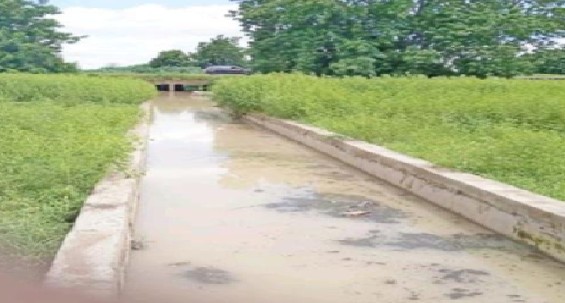
Uba Flood & Ngamdu sites, Borno State After

Uba Flood & Ngamdu sites, Borno State Before

Ongoing 9.2km Gully Erosion/Flood control project in Damaturu, Yobe State 3

Ongoing 9.2km Gully Erosion/Flood control project in Damaturu, Yobe State 2

Solar Powered Borehole, Niger State

Impact Of Solar Borehole Implementation, Kano State

Installation of Tube-Wells for Irrigation Farming, FCT

Establishment of 40km shelterbelt, Sokoto State
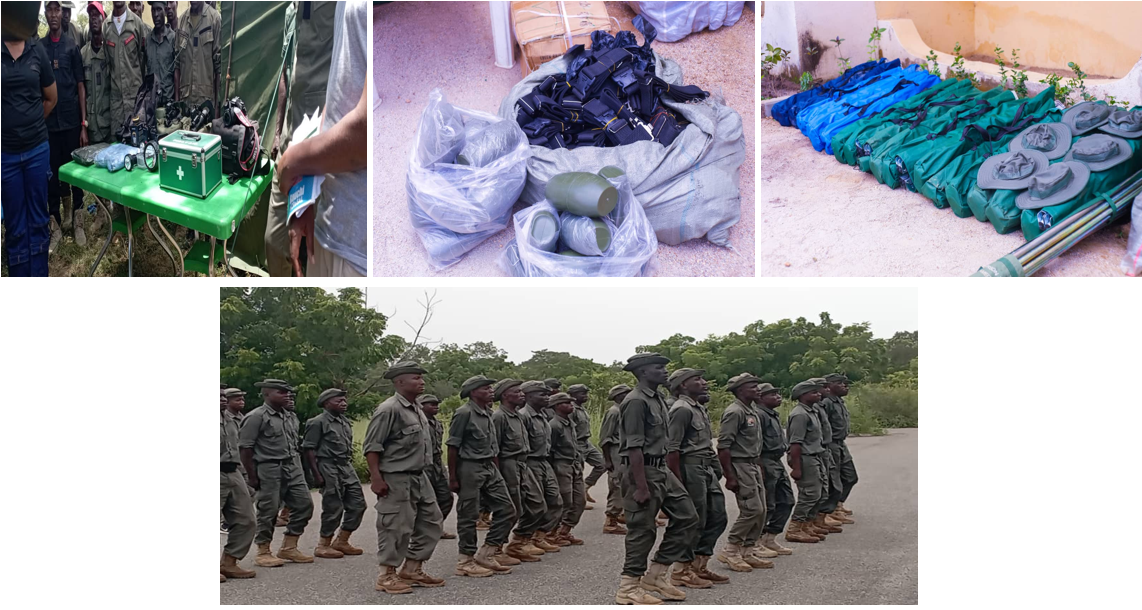
SUPPORT TO YANKARI GAME RESERVE

SUPPORT TO YANKARI GAME RESERVE, BAUCHI STATE
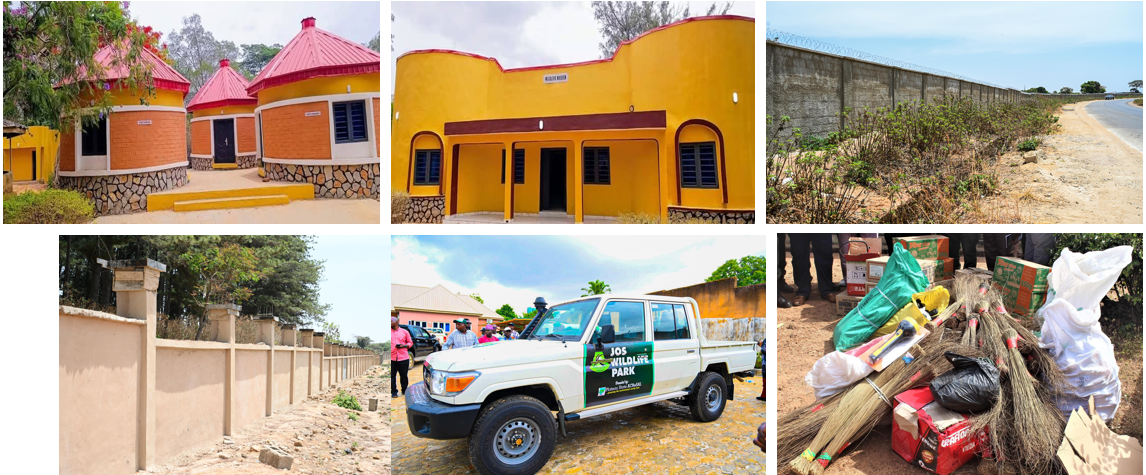
SUPPORT TO JOS WILD-LIFE PARK, PLATEAU STATE

Rehabilitation of Sanda Kyarimi Park, Borno After

Ongoing Rehabilitation of Wurno Irrigation scheme, Sokoto State

Zabarmari Irrigation site, Borno State

Expansion of Ladari Irrigation Scheme, Borno State 2

Expansion of Ladari Irrigation Scheme, Borno State

Rehabilitated Facilities in Yankari Game Reserve, Bauchi State

Old and New Game Viewing Trucks, Yankari Game Reserve, Bauchi State
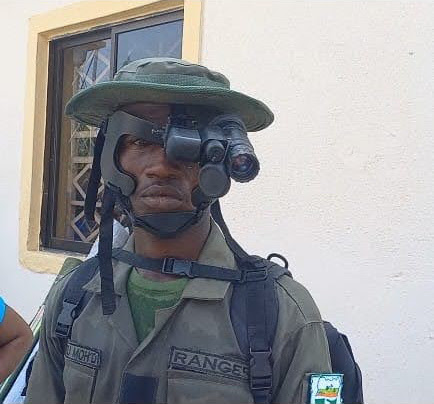
State of The Art Binoculars And Equipment, Yankari Game Reserve
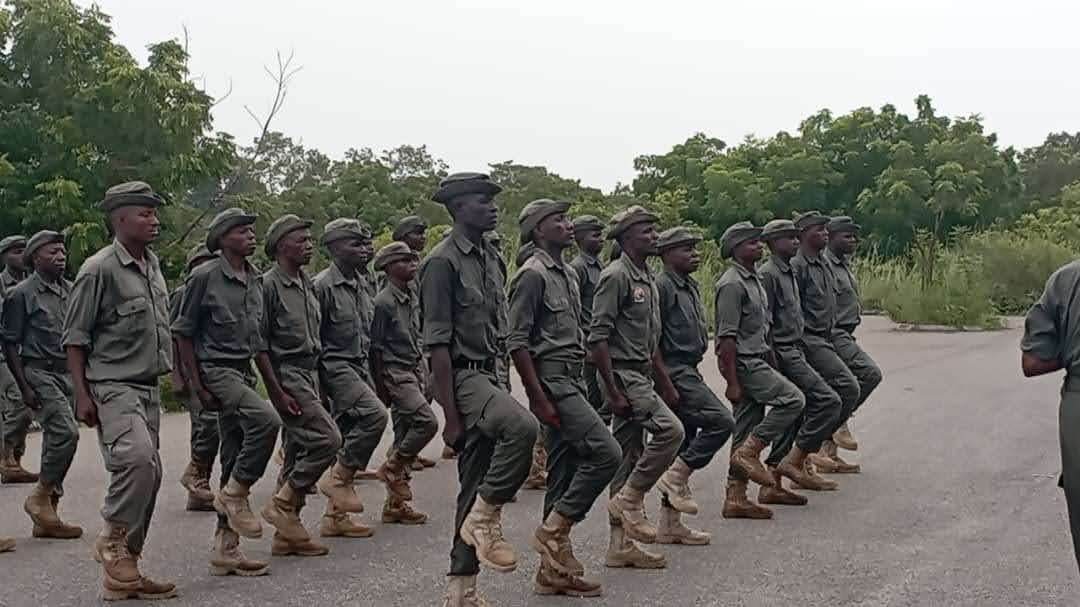
Trained Rangers, Yankari Game Reserve
ACTIVITIES
Q1 - 2025
-
Afforestation

Rehabilitation Of Ailing Forest Reserves Buga and Kujekwa Forests, Fct

Rehabilitation Of Ailing Forest Reserves Ofejiji Okura, Dekina

Rehabilitation Of Ailing Forest Reserves Ofejiji Okura, Dekina

Rehabilitation Of Ailing Forest Reserves Olle Forest
-
Drainage Clearance

Desilting and Evacuation of Drainages, Benue State

Desilting of Major Drains Jakara Stream, Kano Metropolis, Kano State After

Desilting of Major Drains Jakara Stream, Kano Metropolis, Kano State Before

Desilting of Major Drains Katsina State
-
Gully Control

Uba Flood & Ngamdu sites, Borno State After

Uba Flood & Ngamdu sites, Borno State Before

Ongoing 9.2km Gully Erosion/Flood control project in Damaturu, Yobe State 3

Ongoing 9.2km Gully Erosion/Flood control project in Damaturu, Yobe State 2
-
Impact of Borehole Implementation

Solar Powered Borehole, Niger State

Impact Of Solar Borehole Implementation, Kano State

Installation of Tube-Wells for Irrigation Farming, FCT

Establishment of 40km shelterbelt, Sokoto State
-
Park Management

SUPPORT TO YANKARI GAME RESERVE

SUPPORT TO YANKARI GAME RESERVE, BAUCHI STATE

SUPPORT TO JOS WILD-LIFE PARK, PLATEAU STATE

Rehabilitation of Sanda Kyarimi Park, Borno After
-
Strategic Watershed Management Plans

Ongoing Rehabilitation of Wurno Irrigation scheme, Sokoto State

Zabarmari Irrigation site, Borno State

Expansion of Ladari Irrigation Scheme, Borno State 2

Expansion of Ladari Irrigation Scheme, Borno State
-
Support to Yankari Game Reserve

Rehabilitated Facilities in Yankari Game Reserve, Bauchi State

Old and New Game Viewing Trucks, Yankari Game Reserve, Bauchi State

State of The Art Binoculars And Equipment, Yankari Game Reserve

Trained Rangers, Yankari Game Reserve
Outputs & Impacts Q1 - 2025
Dryland Management
Strategic Watershed Planning
Landscape Investments
Special Ecosystems
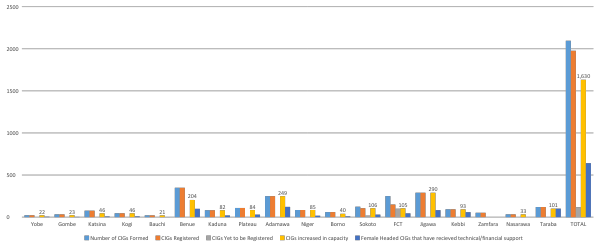
CIG Implementation
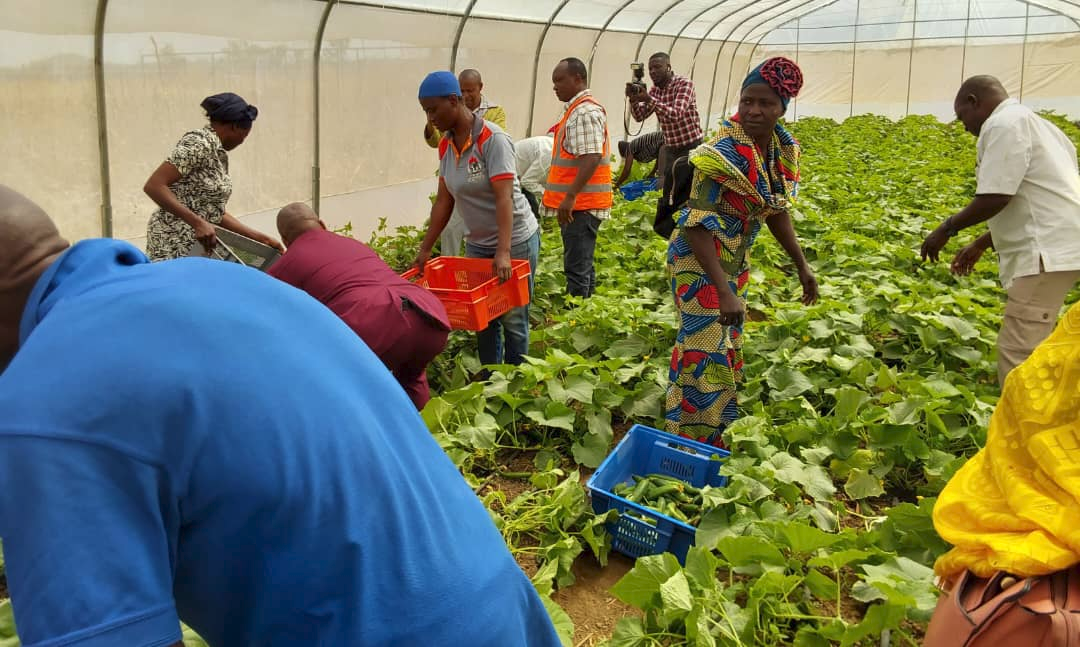
Hybrid Cucumber Cultivated From Greenhouse Farming System, Plateau State
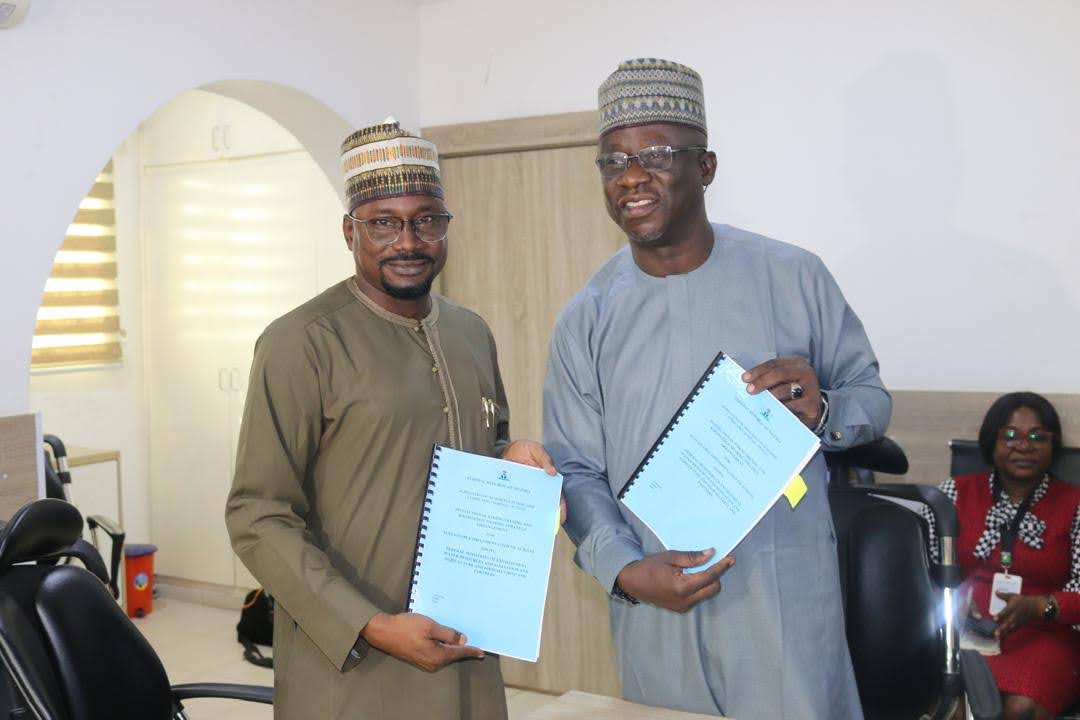
Signing of MOU With NEP – ACReSAL And NEP Coordinators
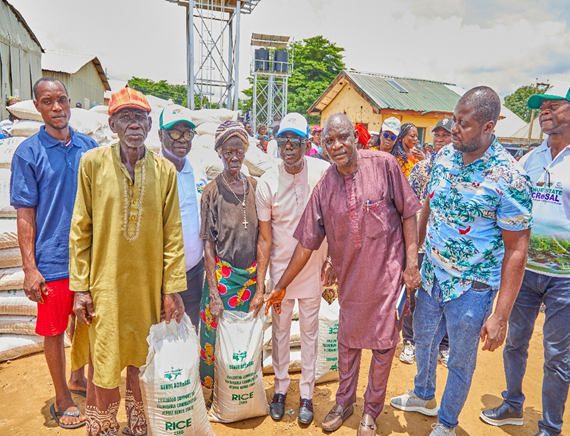
Provision of 100 solar powered boreholes for rural communities, IDPs Camps, Benue ACReSAL Office, Ministry of Agriculture and Livelihood support to vulnerable communities across the State (Completed)
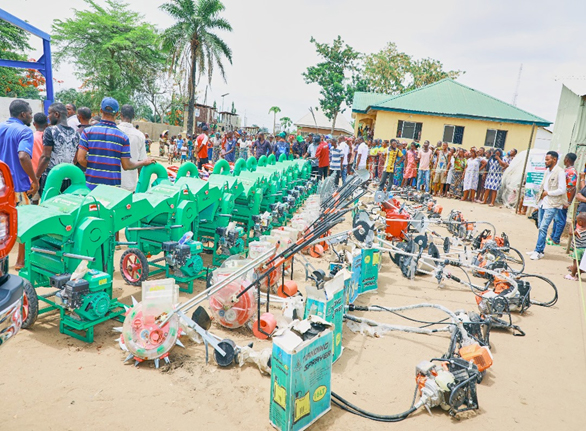
Provision of Solar Lights and Climate Smart Agricultural farm inputs for farmer groups in Internally Displaced Persons Camps across Benue State (Completed)
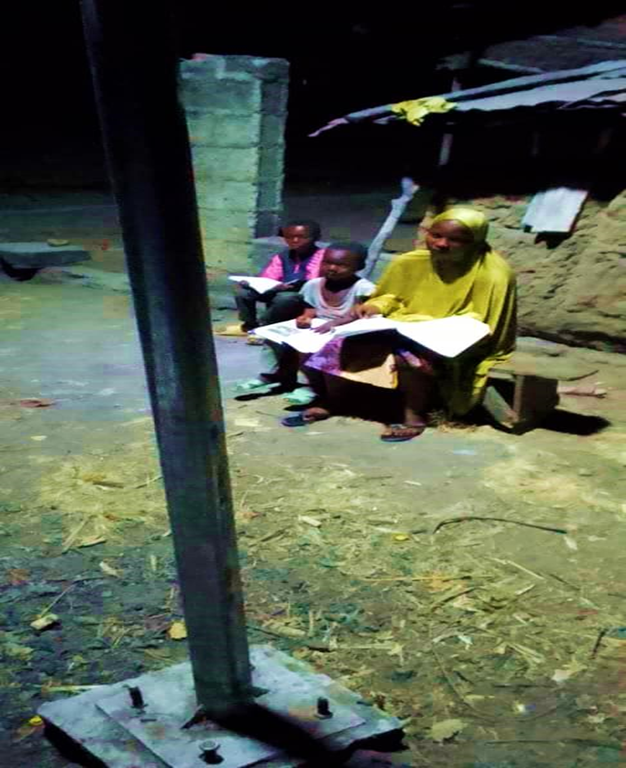
Students Using The Streetlight to Study at Night/Relaxation at Utoro in Okene LGA in Kogi State

Street Lighting, Nasarawa State
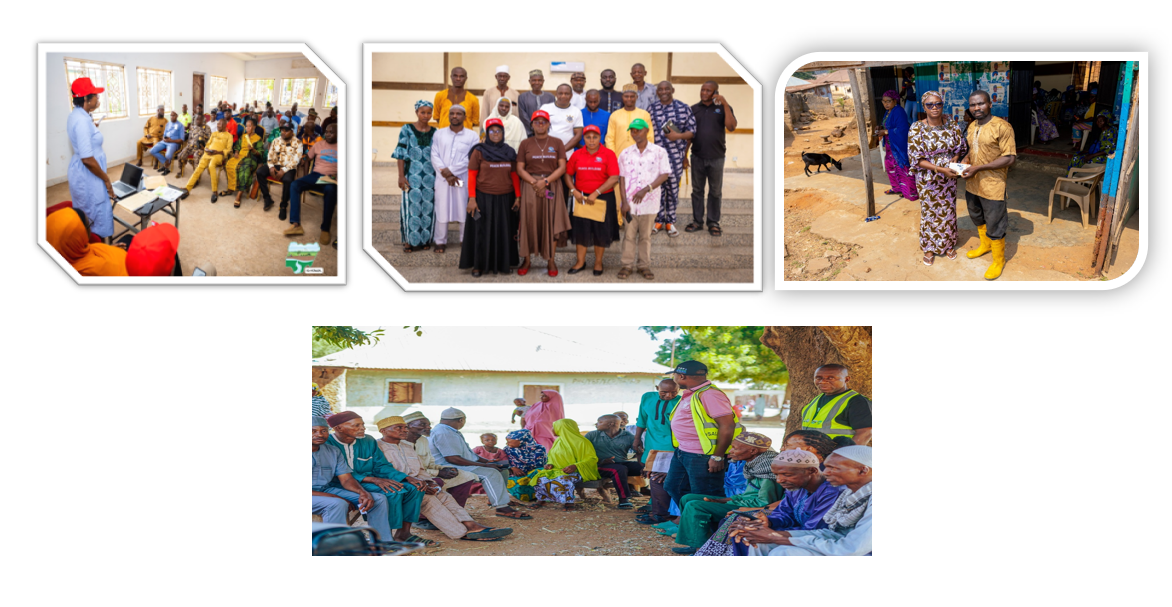
TRAINING ON EARLY WARNING EARLY RESPONSE (EWER), PEACE-BUILDING AND CONFLICT RESOLUTION

Community Engagement in Bela Gidan Dangwari and Kolo community Zamfara State on the Implementation of CRF

Engagement with Kabogi Community members in Niger State on CRF

Community engagement activities on CRF in Damaturu and Nguru LGAs of Yobe State –
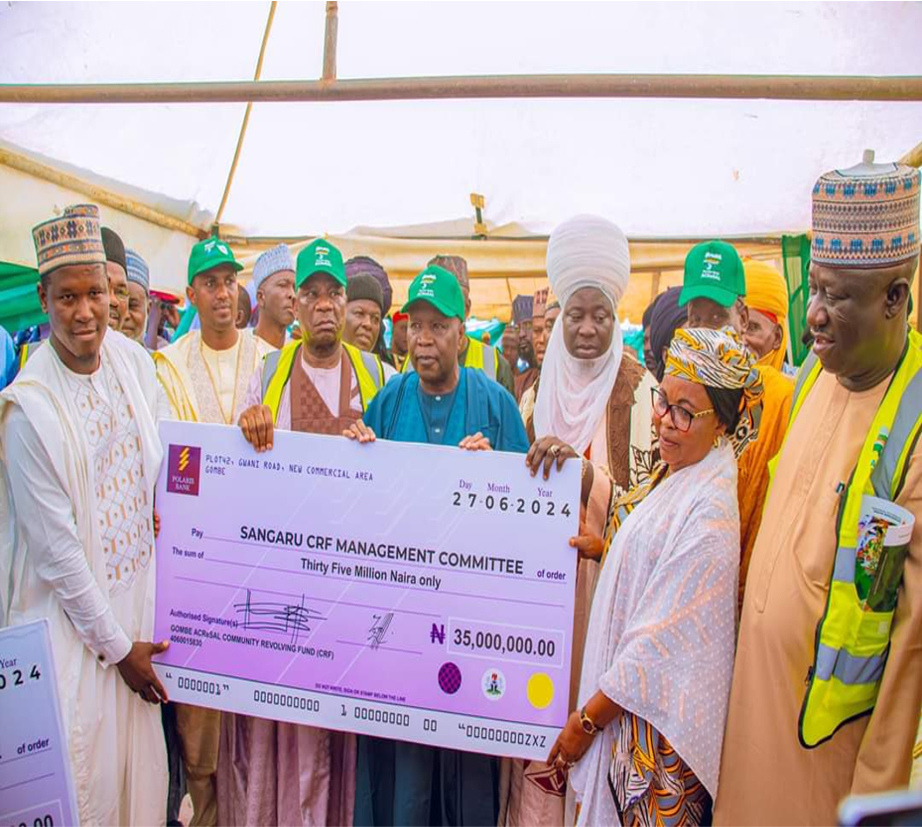
Governor of Gombe State, Dr. Inuwa Mohammed Yahaya Presentation of CRF Cheque to Sangaru CRF Management Committee in Gombe State

Presentation of CRF Cheque to 10 CRF Management Committee Members in Kogi State –

Presentation of CRF Cheque to 10 CRF Management Committee Members in Kogi State

Tractor Distribution to Beneficiaries In Dange-Shuni, Bodinga And Wurno Lgasof Sokoto State –
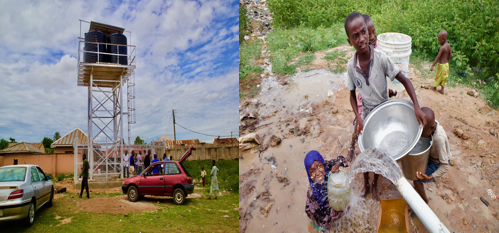
Solar powered boreholes completed in Samunaka, Yola South, Adamawa St
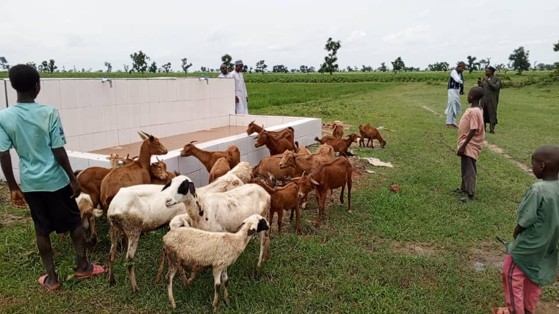
Solar borehole with water trough for animals in Gubuchi village, Makarfi LGA, Kaduna
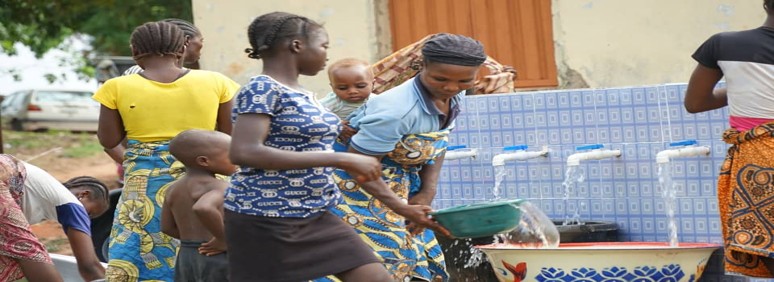
Solar powered Borehole in Pai Community, Kwali Area Council, FCT

Members of the communities queued up to fetch water from the solar-powered borehole after the intervention at Kyallin-Bula & Danya communities in Kano State

CIG Activities under CRF in Yobe (Onion planting at Wachakal by women groups, Guna Processing by Women Agro Processing Group at Dagirari and Guna Processing CIG at dagirari community Nguru, Yobe State —
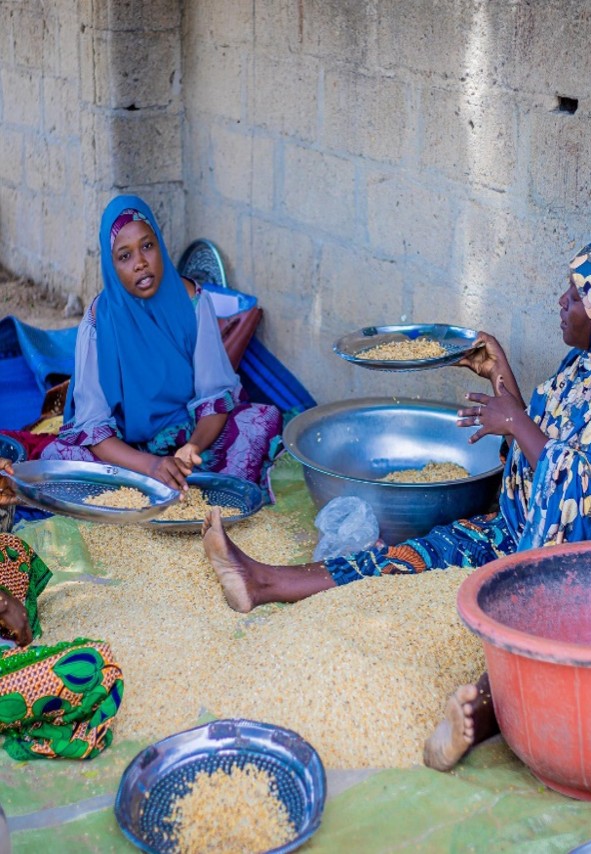
CIG Activities under CRF in Yobe (Onion planting at Wachakal by women groups, Guna Processing by Women Agro Processing Group at Dagirari and Guna Processing CIG at dagirari community Nguru, Yobe State-

CIG Activities under CRF in Yobe (Onion planting at Wachakal by women groups, Guna Processing by Women Agro Processing Group at Dagirari and Guna Processing CIG at dagirari community Nguru, Yobe State

Professional Cleaning Services Staff Thrift and Loans harvesting their Soya bean farm in Benue State

Distribution of Energy Efficient Cooking Stove in Kogi State
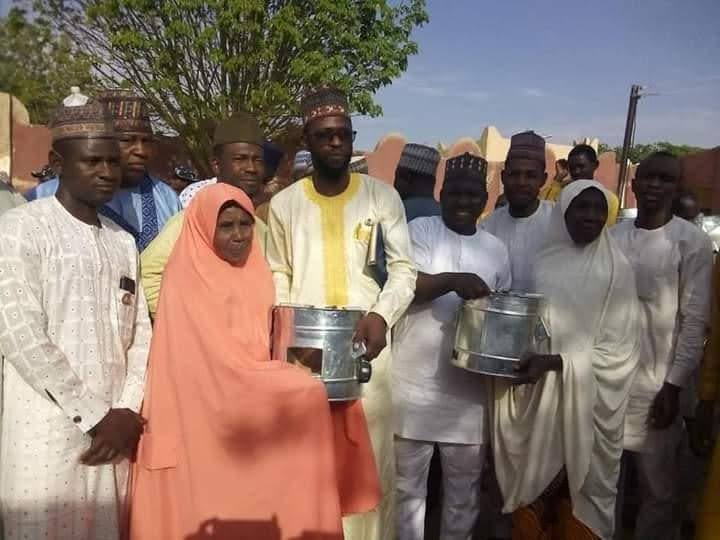
Distribution of Energy Efficient Cooking Stove in Gamawa LGA, Bauchi State
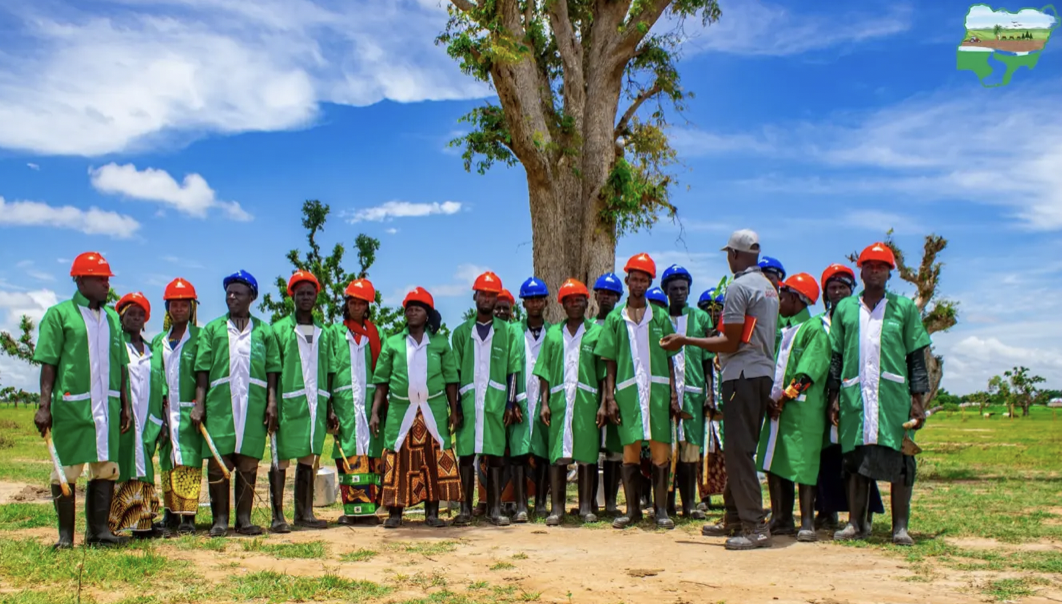
ACReSAL Vanguards, Adamawa State

Environmental Club at Community Sec. School Okene, Kogi State
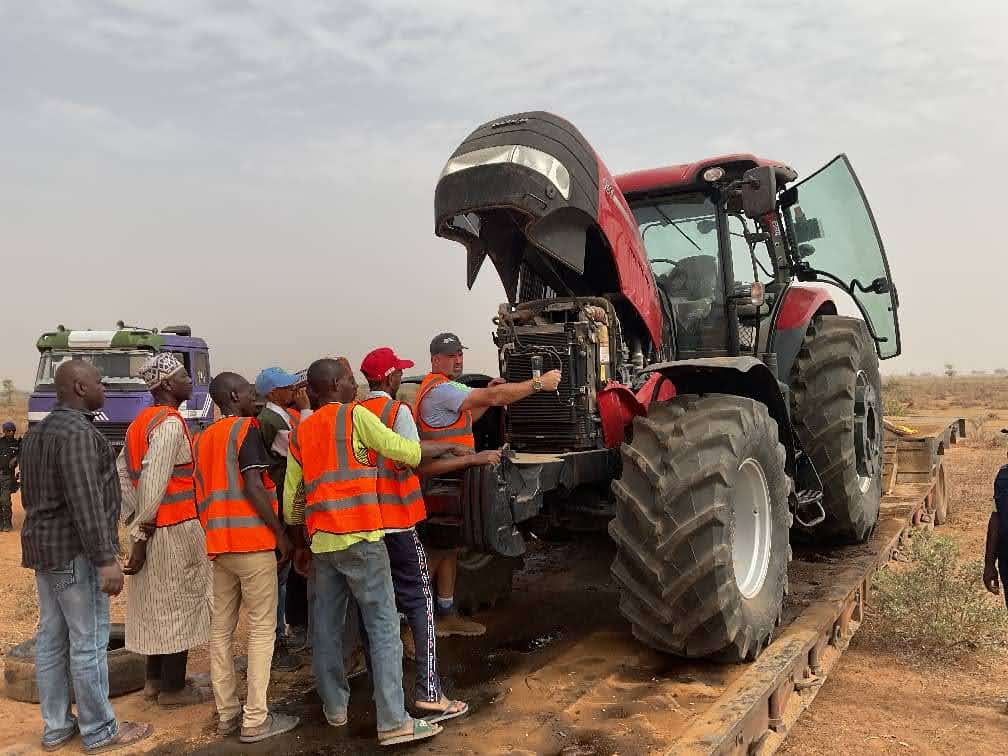
Training on Operation And Maintenance of Delphino Plough Held at Kano State

FAO Step-Down Training in Zamfara, FCT And Kwara Respectively

FAO Step-Down Training Organized by Bauchi State

Benue State ACReSAL Step-Down Training of FAO Train The Trainer’s Workshop

Tractor Distribution to Beneficiaries In Dange-Shuni, Bodinga And Wurno Lgasof Sokoto State –

Tractor Distribution to Beneficiaries In Dange-Shuni, Bodinga And Wurno Lgasof Sokoto State

Marsey Ferguson brand of tractors distributed to 20 LGAs in Bauchi State, to boost Agricultural activities

Distribution and Operationalisation of Tractors in 6 Area Councils of FCT –
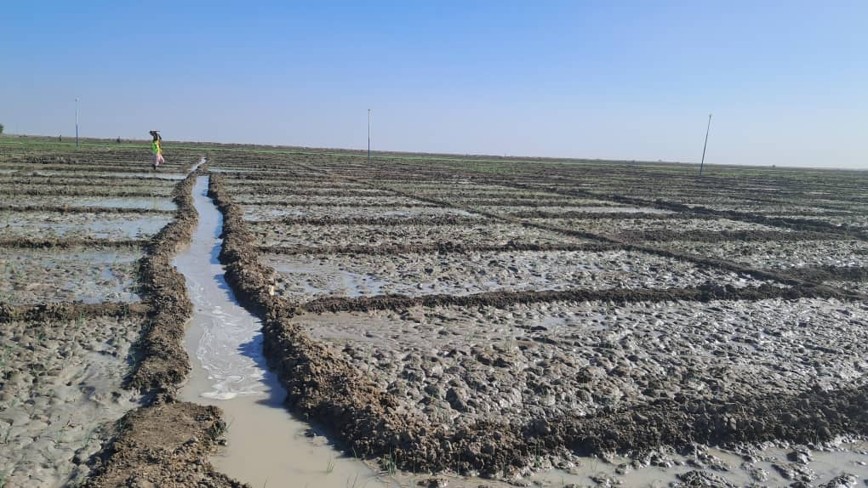
Irrigation Expansion

A Demonstration of ACReSAL Impact in Land Restoration Activities, A case of Regenerative Agriculture in Adamawa State, Nigeria

Drone Footage of the Adamawa Regenerative Site – August
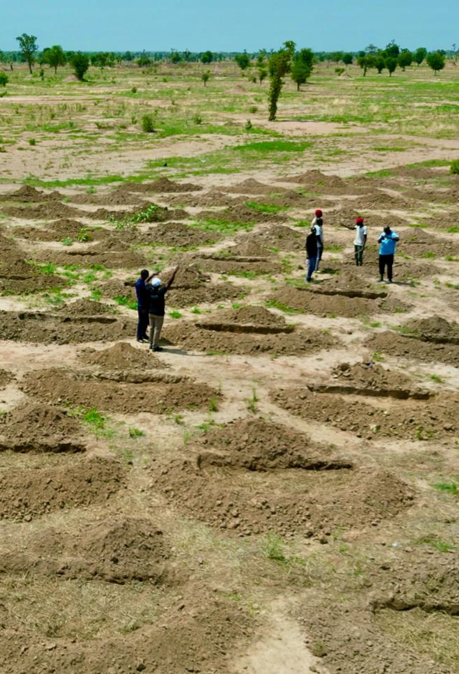
Drone Footage of the Adamawa Regenerative Site – June
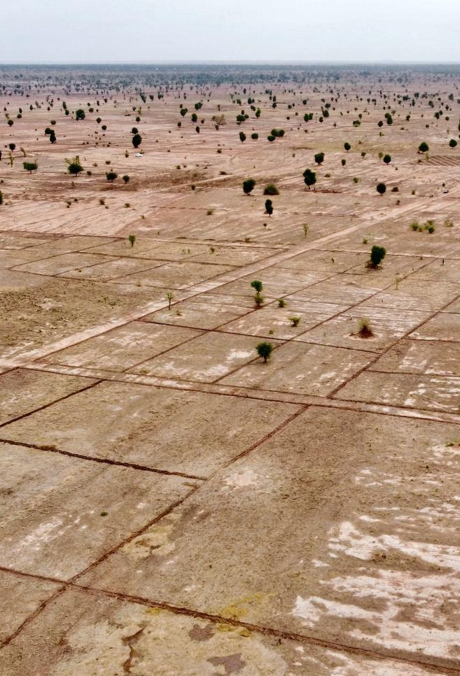
Drone Footage of the Adamawa Regenerative Site – May

Impact of Regenerartive Agriculture in Adadmawa State
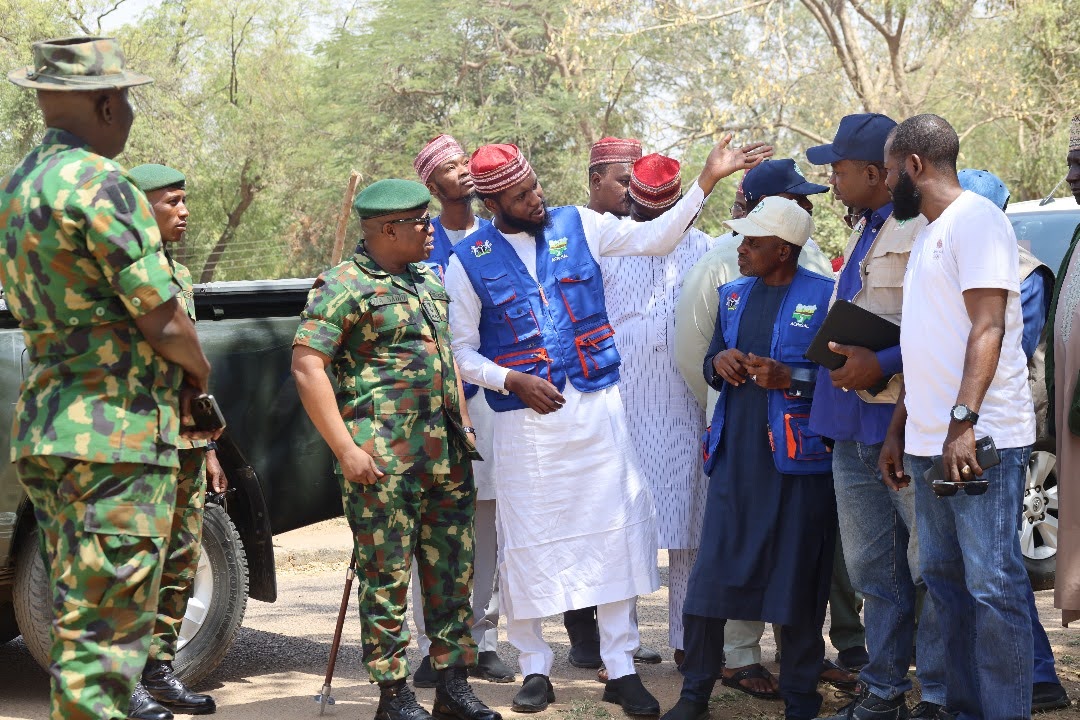
Courtesy Visit to Brigade Commander 3-Brigade Bukavu Barracks, Kano State

Sensitization Visit to Commissioner of Police, Nasarawa State
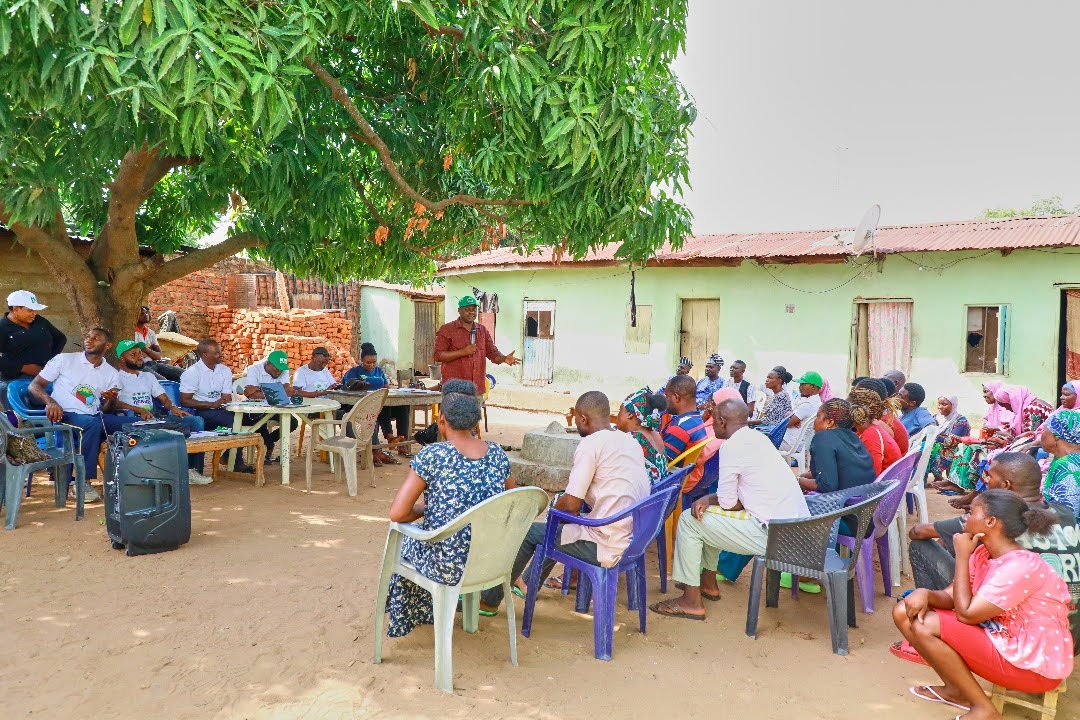
CIG Grading Process, North Bank Community, Benue State
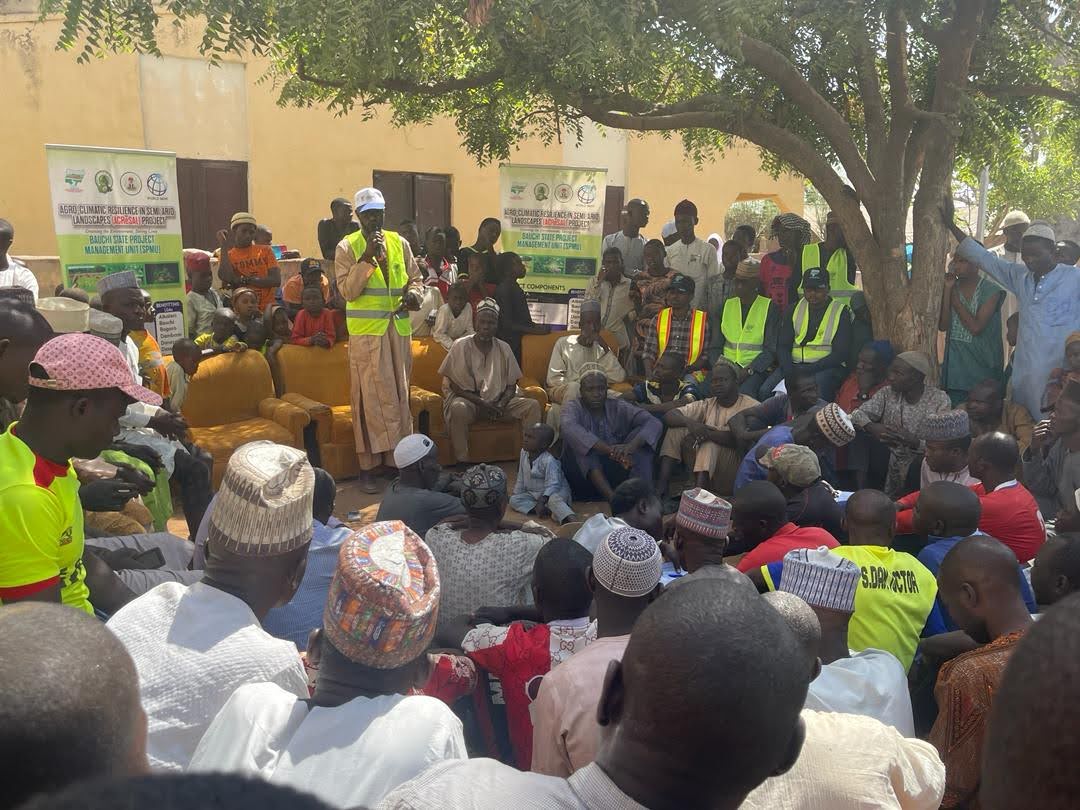
CIG Capacity Building, Juwara Community, Bauchi State
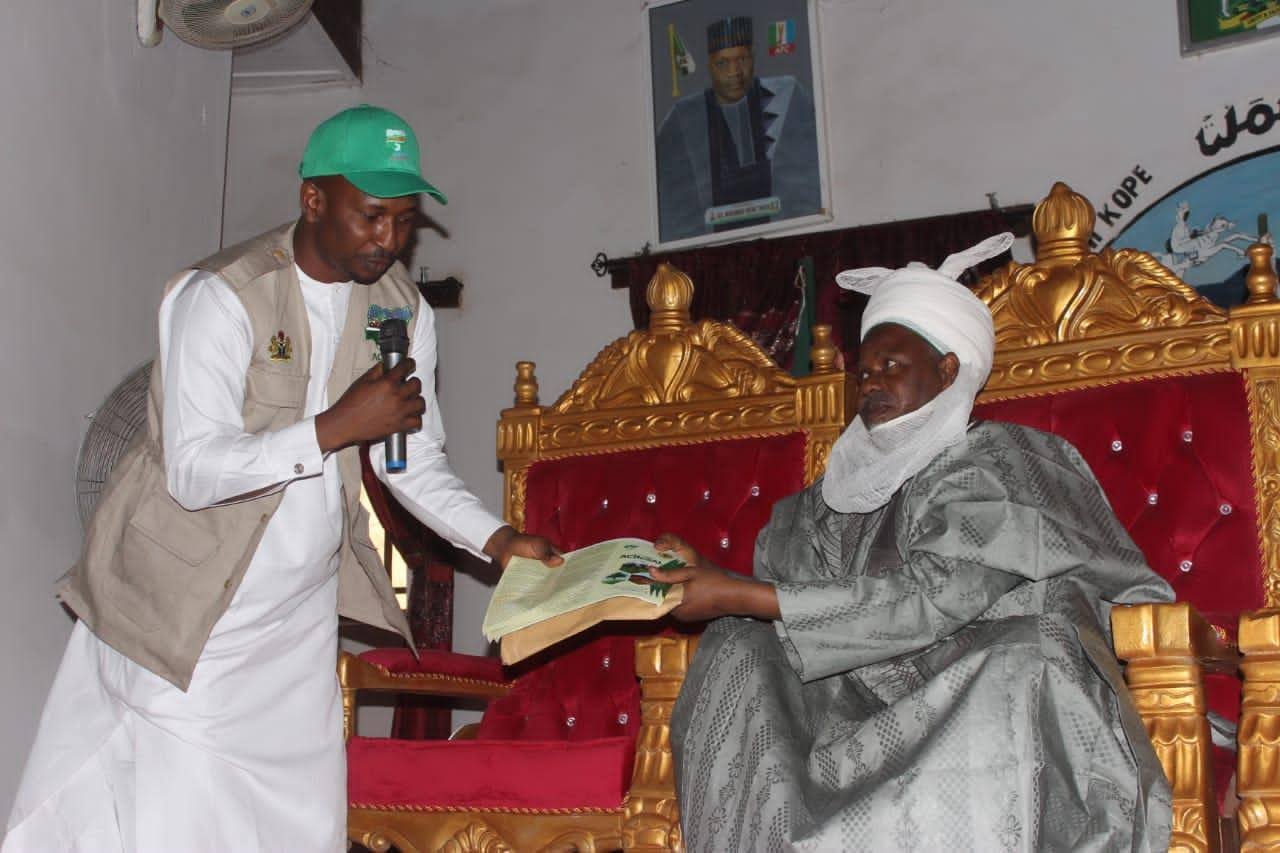
HRH Abubakar Aliyu Emir of Yamaltu Receiving Sensitization Materials During The SPMU’s Visit to The Emirate – Gombe State
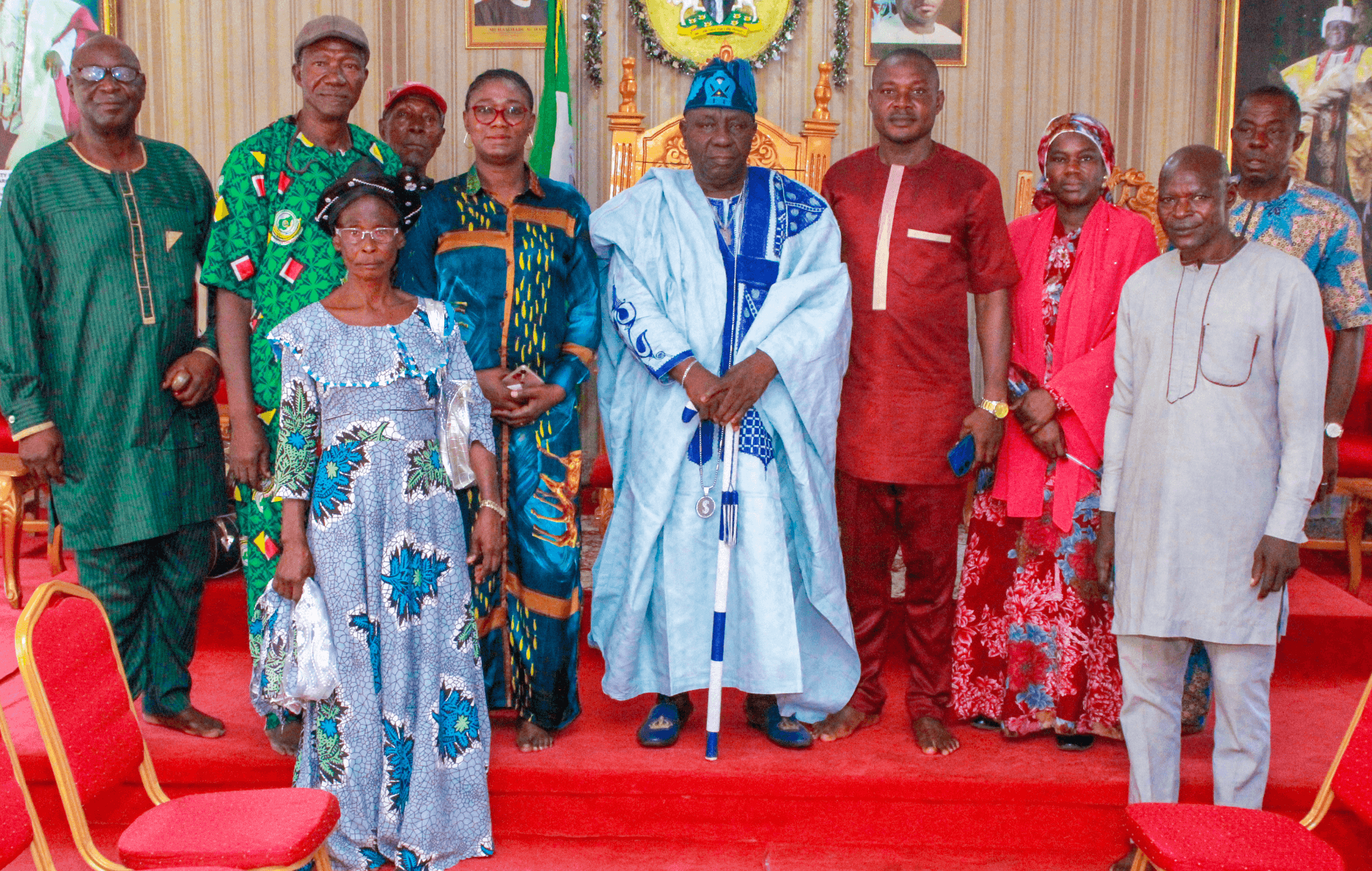
Stakeholder Engagement And Community Sensitization With The Obaro of Kabba at Omigbo, Kabba LGA, Kogi State
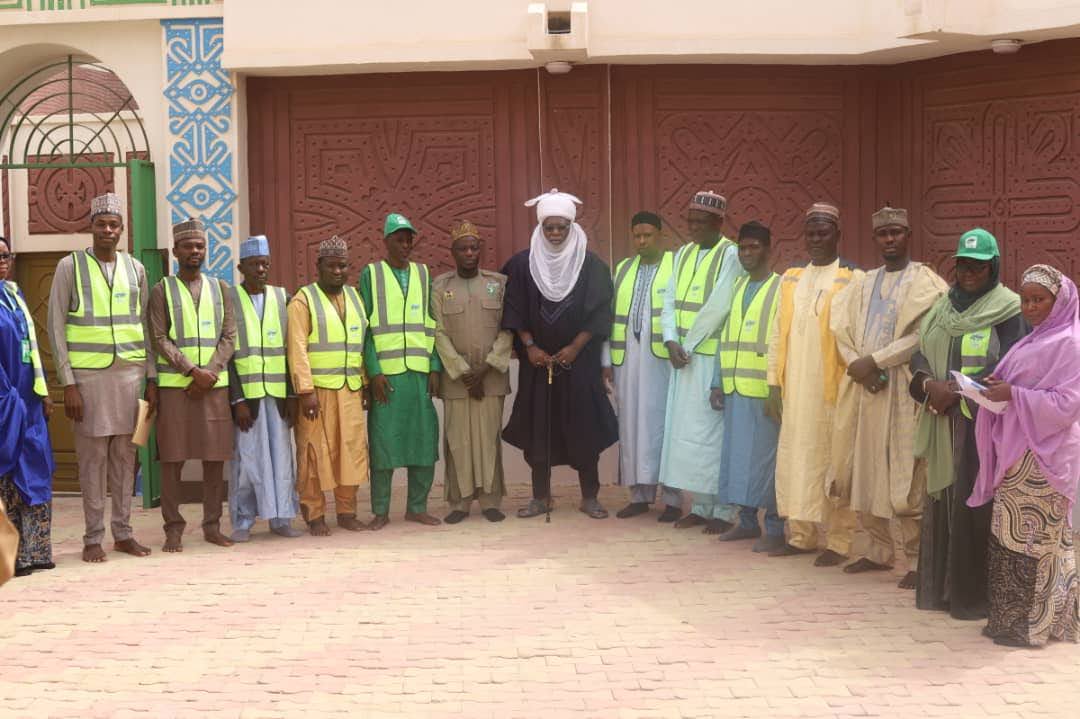
Visit to Kazaure Emirate, Jigawa State

Yobe ACReSAL Team Presenting Advocacy Kits to His Royal Highness, The Emir of Fika, Chairman, Council of Traditional Rulers, Yobe State
ACTIVITIES
Q1 - 2025
-
CIG Implementation

CIG Implementation
-
Climate Smart Agriculture

Hybrid Cucumber Cultivated From Greenhouse Farming System, Plateau State
-
Collaboration with Nigeria Electrification Project (NEP)

Signing of MOU With NEP – ACReSAL And NEP Coordinators
-
Community Climate Resilience

Provision of 100 solar powered boreholes for rural communities, IDPs Camps, Benue ACReSAL Office, Ministry of Agriculture and Livelihood support to vulnerable communities across the State (Completed)

Provision of Solar Lights and Climate Smart Agricultural farm inputs for farmer groups in Internally Displaced Persons Camps across Benue State (Completed)

Students Using The Streetlight to Study at Night/Relaxation at Utoro in Okene LGA in Kogi State

Street Lighting, Nasarawa State
-
Community Engagement

TRAINING ON EARLY WARNING EARLY RESPONSE (EWER), PEACE-BUILDING AND CONFLICT RESOLUTION

Community Engagement in Bela Gidan Dangwari and Kolo community Zamfara State on the Implementation of CRF

Engagement with Kabogi Community members in Niger State on CRF

Community engagement activities on CRF in Damaturu and Nguru LGAs of Yobe State –
-
Community Investments

Governor of Gombe State, Dr. Inuwa Mohammed Yahaya Presentation of CRF Cheque to Sangaru CRF Management Committee in Gombe State

Presentation of CRF Cheque to 10 CRF Management Committee Members in Kogi State –

Presentation of CRF Cheque to 10 CRF Management Committee Members in Kogi State

Tractor Distribution to Beneficiaries In Dange-Shuni, Bodinga And Wurno Lgasof Sokoto State –
-
Construction of Solar Borehole

Solar powered boreholes completed in Samunaka, Yola South, Adamawa St

Solar borehole with water trough for animals in Gubuchi village, Makarfi LGA, Kaduna

Solar powered Borehole in Pai Community, Kwali Area Council, FCT

Members of the communities queued up to fetch water from the solar-powered borehole after the intervention at Kyallin-Bula & Danya communities in Kano State
-
CRF Activities

CIG Activities under CRF in Yobe (Onion planting at Wachakal by women groups, Guna Processing by Women Agro Processing Group at Dagirari and Guna Processing CIG at dagirari community Nguru, Yobe State —

CIG Activities under CRF in Yobe (Onion planting at Wachakal by women groups, Guna Processing by Women Agro Processing Group at Dagirari and Guna Processing CIG at dagirari community Nguru, Yobe State-

CIG Activities under CRF in Yobe (Onion planting at Wachakal by women groups, Guna Processing by Women Agro Processing Group at Dagirari and Guna Processing CIG at dagirari community Nguru, Yobe State

Professional Cleaning Services Staff Thrift and Loans harvesting their Soya bean farm in Benue State
-
Distribution of Clean Cook Stove

Distribution of Energy Efficient Cooking Stove in Kogi State

Distribution of Energy Efficient Cooking Stove in Gamawa LGA, Bauchi State
-
Environmental Clubs/Entities

ACReSAL Vanguards, Adamawa State

Environmental Club at Community Sec. School Okene, Kogi State
-
FAO Training

Training on Operation And Maintenance of Delphino Plough Held at Kano State

FAO Step-Down Training in Zamfara, FCT And Kwara Respectively

FAO Step-Down Training Organized by Bauchi State

Benue State ACReSAL Step-Down Training of FAO Train The Trainer’s Workshop
-
Farm Input Distribution

Tractor Distribution to Beneficiaries In Dange-Shuni, Bodinga And Wurno Lgasof Sokoto State –

Tractor Distribution to Beneficiaries In Dange-Shuni, Bodinga And Wurno Lgasof Sokoto State

Marsey Ferguson brand of tractors distributed to 20 LGAs in Bauchi State, to boost Agricultural activities

Distribution and Operationalisation of Tractors in 6 Area Councils of FCT –
-
Irrigation Expansion

Irrigation Expansion
-
Landscape Restoration

A Demonstration of ACReSAL Impact in Land Restoration Activities, A case of Regenerative Agriculture in Adamawa State, Nigeria

Drone Footage of the Adamawa Regenerative Site – August

Drone Footage of the Adamawa Regenerative Site – June

Drone Footage of the Adamawa Regenerative Site – May
-
Regenerative Agriculture

Impact of Regenerartive Agriculture in Adadmawa State
-
Sensitization Activities

Courtesy Visit to Brigade Commander 3-Brigade Bukavu Barracks, Kano State

Sensitization Visit to Commissioner of Police, Nasarawa State

CIG Grading Process, North Bank Community, Benue State

CIG Capacity Building, Juwara Community, Bauchi State
-
Stakeholder Community Engagement

HRH Abubakar Aliyu Emir of Yamaltu Receiving Sensitization Materials During The SPMU’s Visit to The Emirate – Gombe State

Stakeholder Engagement And Community Sensitization With The Obaro of Kabba at Omigbo, Kabba LGA, Kogi State

Visit to Kazaure Emirate, Jigawa State

Yobe ACReSAL Team Presenting Advocacy Kits to His Royal Highness, The Emir of Fika, Chairman, Council of Traditional Rulers, Yobe State
Outputs & Impacts Q1 - 2025
Community Climate Resilience
Community Strengthening
Community Investments
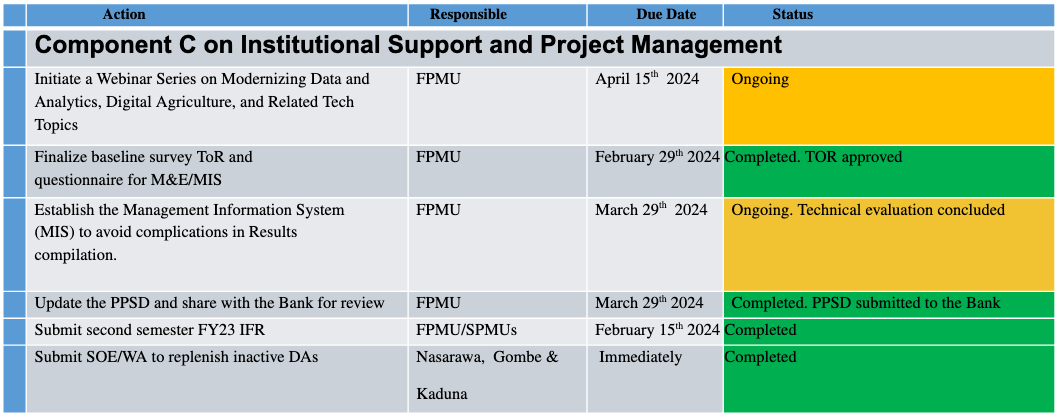
Agreed Action 2
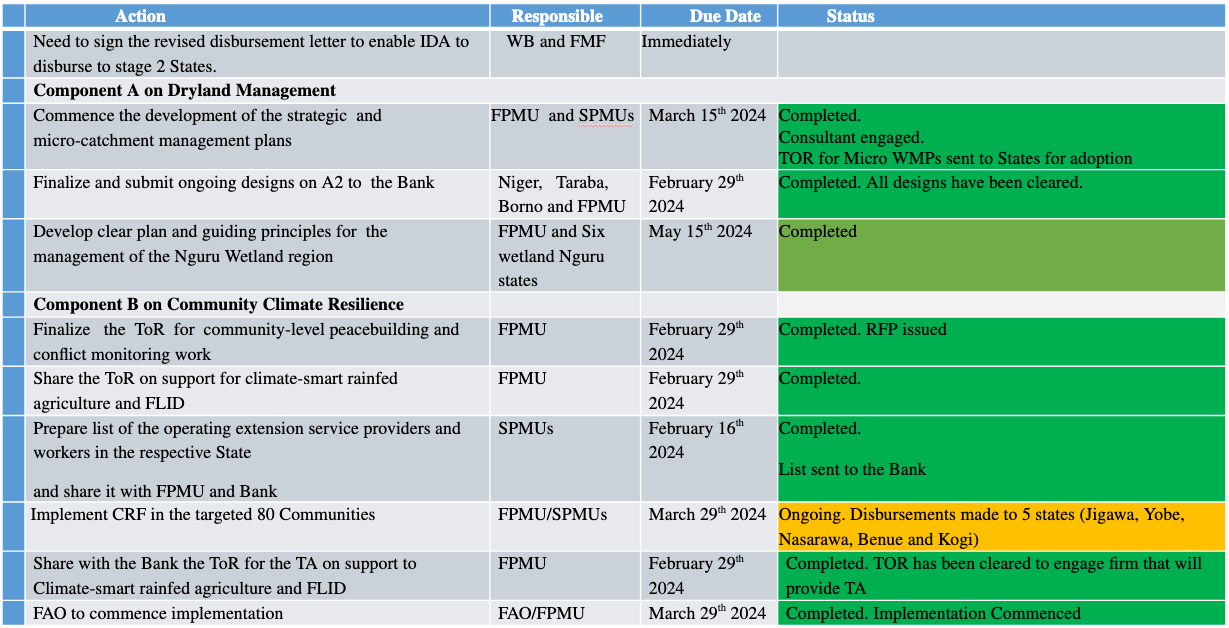
Agreed Action 1

Air Quality Ambient Equipment delivered to Environment Protection Authority, Kaduna State

State Water Treatment Laboratory, Zamfara State

Development of Digital Precision Agriculture Extension Platform
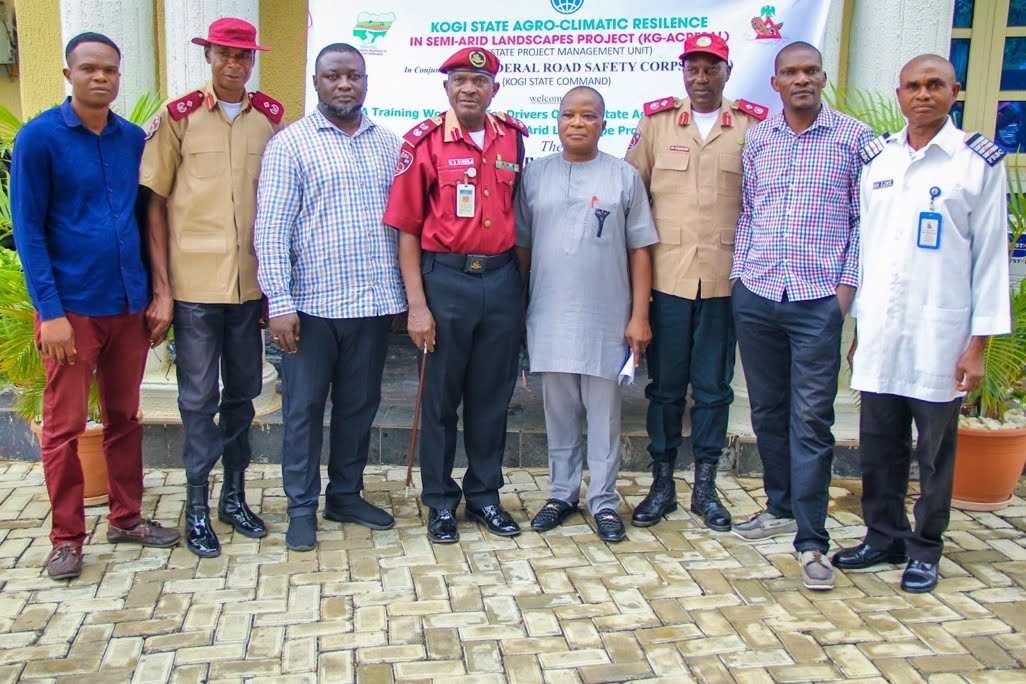
Driver Training Sessions (Kogi, Gombe And Borno Respectively)
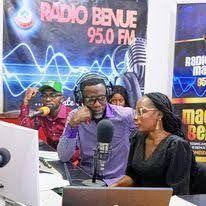
Radio Session, Benue State

Road Walk Sensitization At Etahi Okene In Kogi State With Community Secondary School Environmental Club
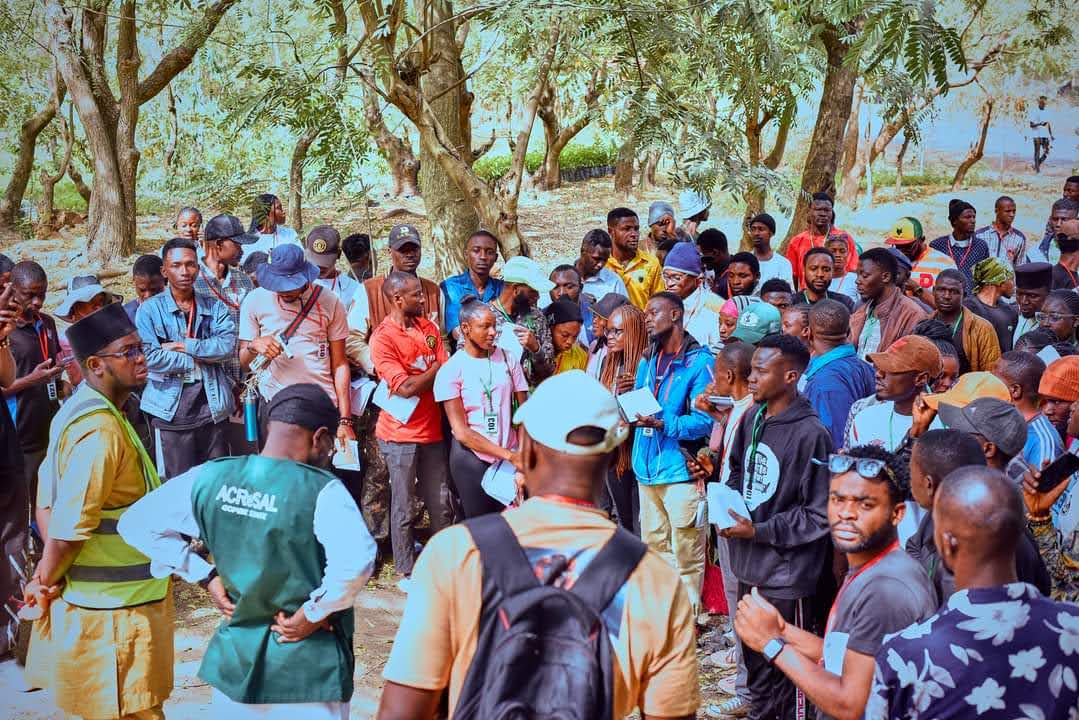
University of Jos Students Visit Kanawa Forest, Gombe State
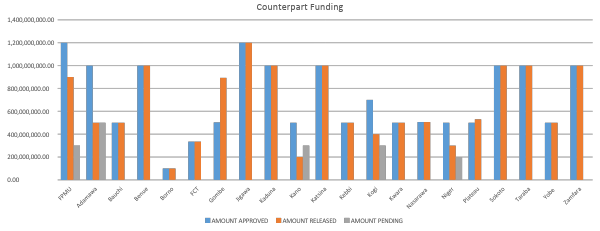
Counterpart Funding
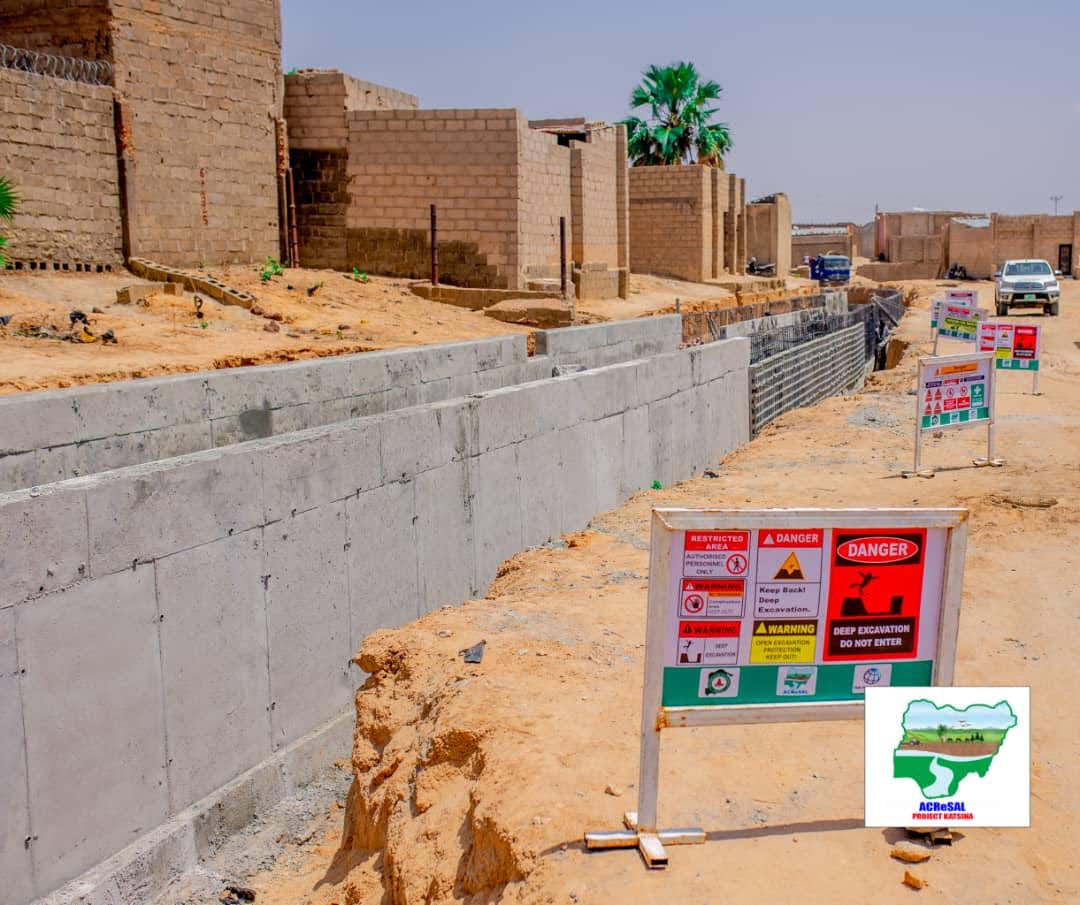
Environmental Safeguards, Katsina State
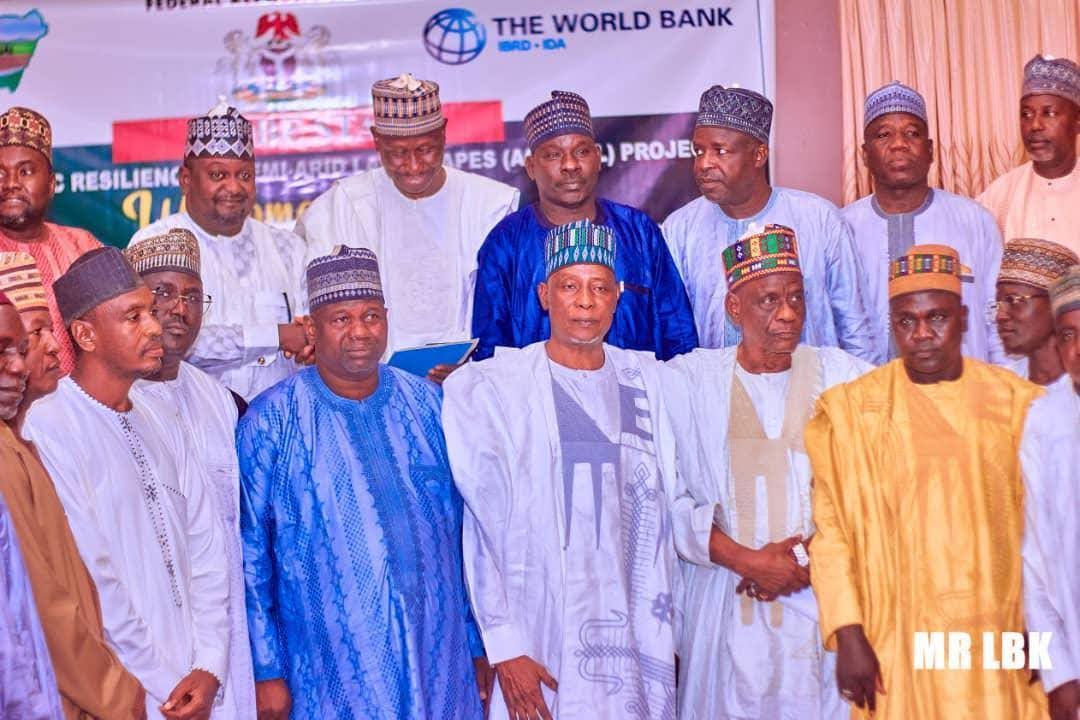
LGPMC Members During Their Inauguration at Damaturu, Yobe State
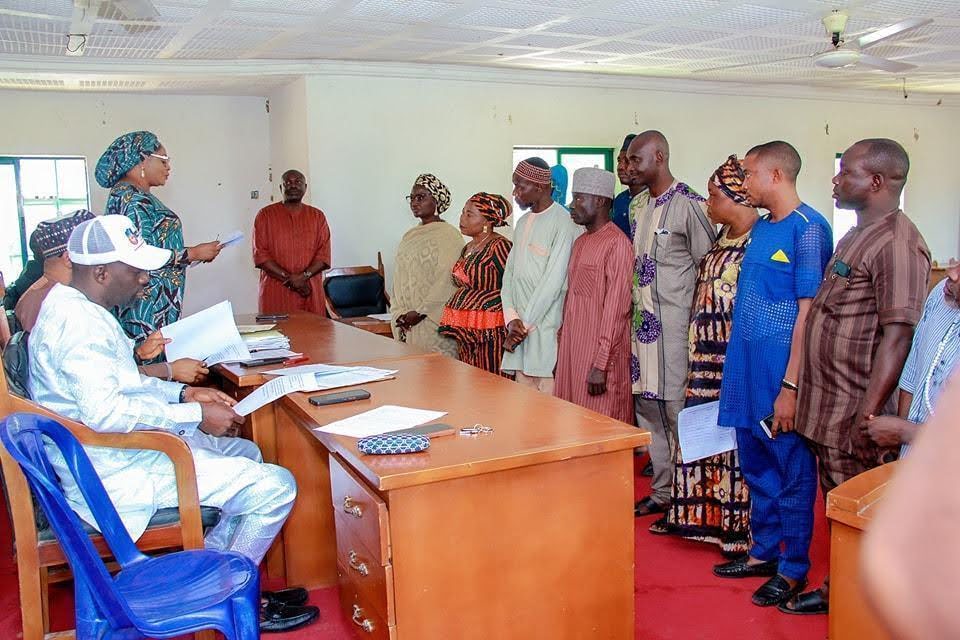
Inauguration of LG Implementation Committee, Kogi State

Payloader and Tipper, Zamfara State
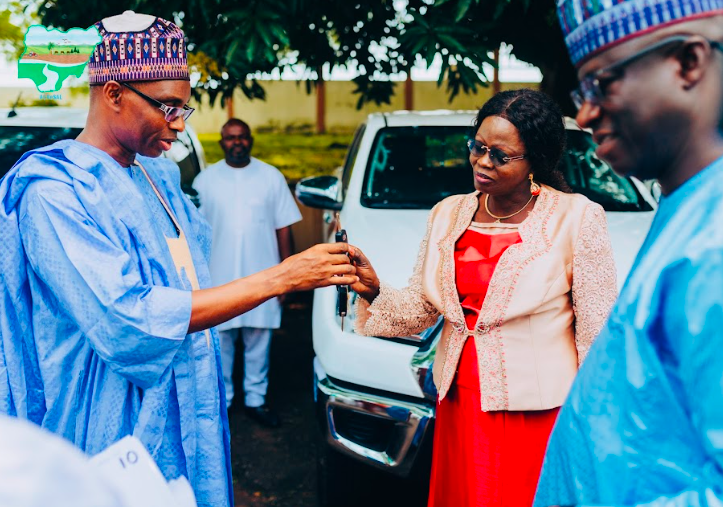
Delivery to DDA Dept. Federal Ministry of Environment
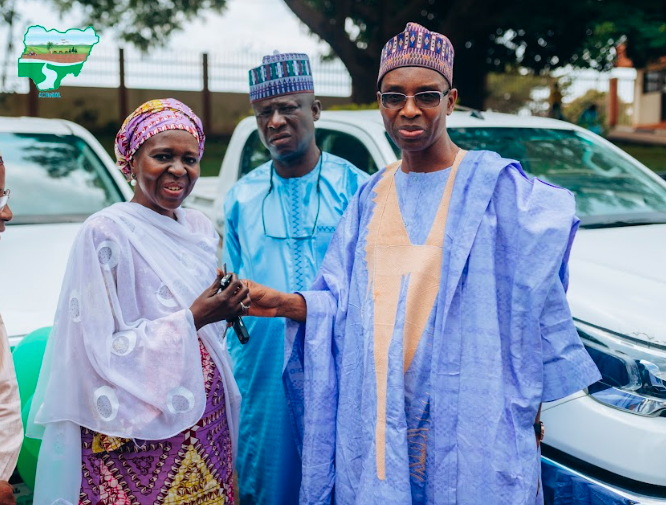
Delivery to Dept. of Forestry, Federal Ministry of Environment

Delivery to Fed. Min of Agriculture And Food Security
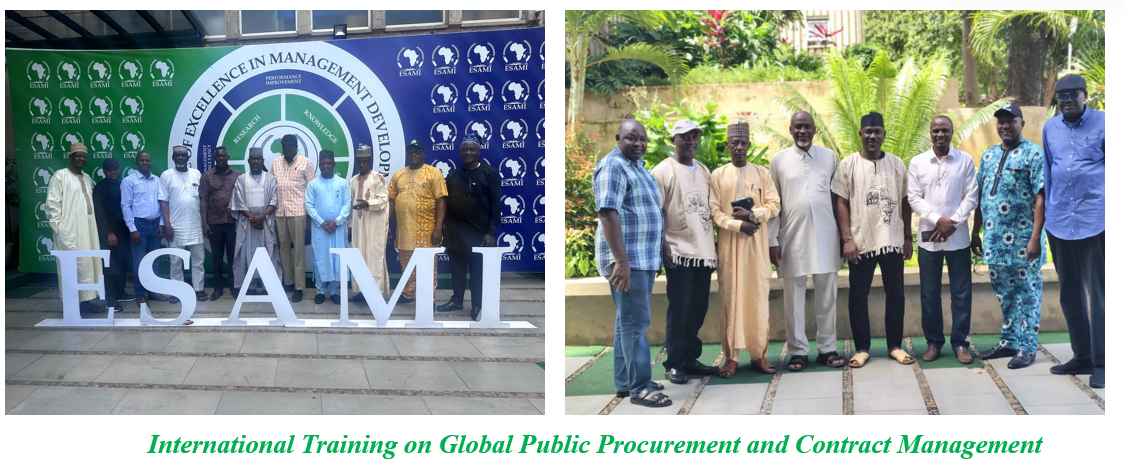
Capacity Enhancement

Safeguard Measures, Kogi State
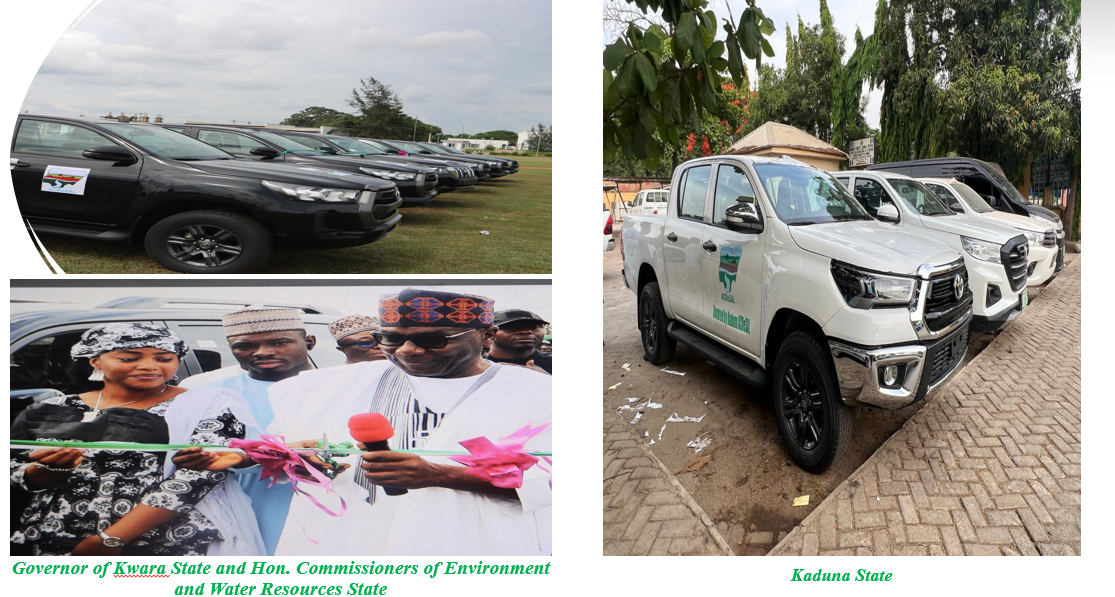
Operational Vehicles

Installed solar powered electrification for State Ministry of Environment, Zamfara State

Payloader and Tipper, Zamfara State
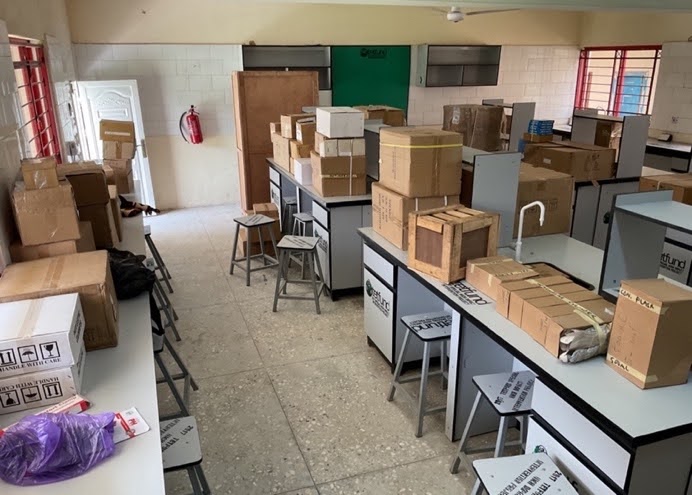
Installation of Solar Power, Soil And Water Quality Laboratory Yusuf Maitama Sule University, Kano State

Presentation of ICT equipment to Hon. Minister of Women Affair

Support to Borno State Ministry of Environment with Operational Trucks

Support to National Space Research and Development Agency (NASRDA)–- Construction of Geographic Information System Center

INSTITUTIONAL STRENGTHENING by kogi PMU

Stakeholder Engagement – National Farmer’s Soil Health Card Scheme

Launching Of Climate Change Policy Document in Kaduna State
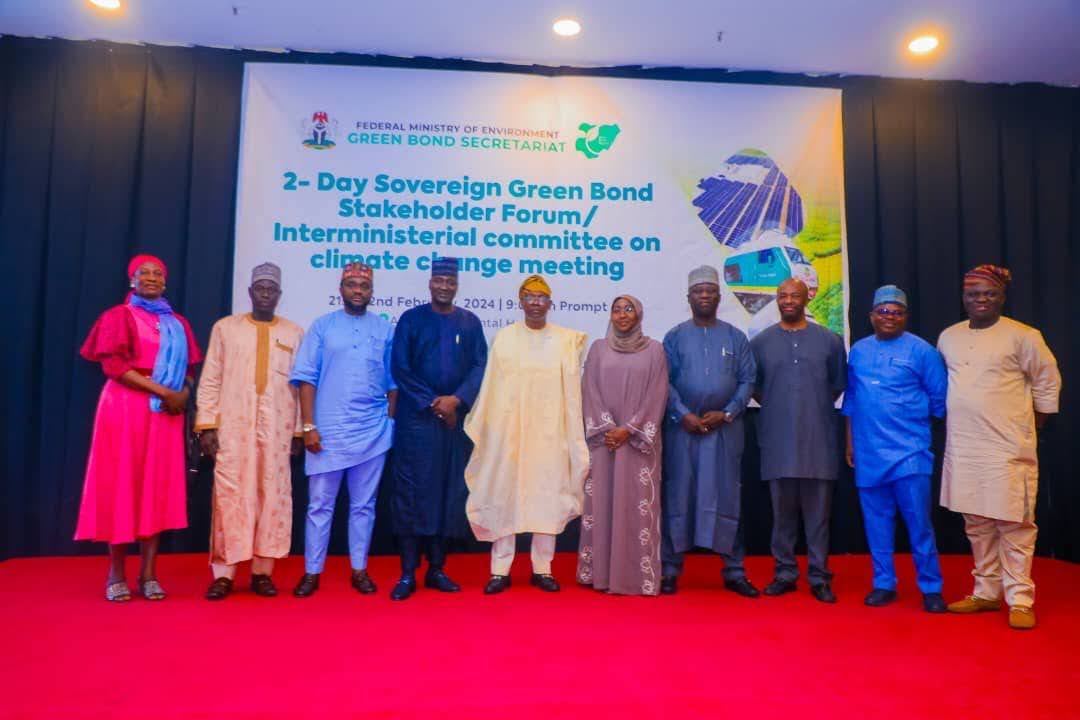
2-day Sovereign Green Bond Stakeholder Forum
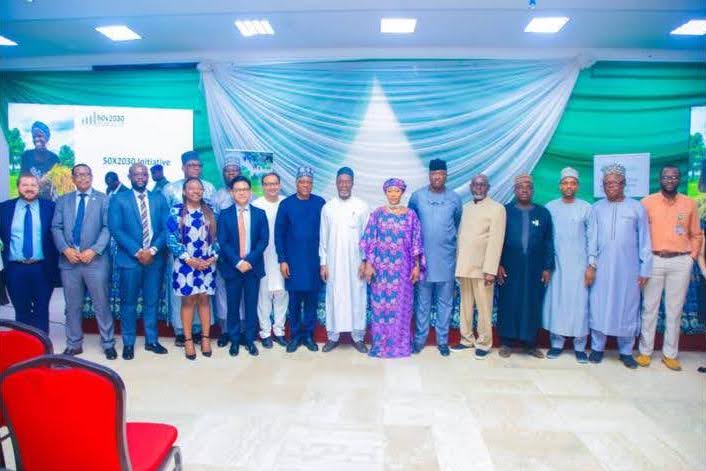
Official Launching of 50X2030 Initiative by the Honourable Minister of Environment, Hon. Balarabe Abass Lawal
ACTIVITIES
Q1 - 2025
-
Agreed Action

Agreed Action 2

Agreed Action 1
-
Capacity Enhancement

Air Quality Ambient Equipment delivered to Environment Protection Authority, Kaduna State

State Water Treatment Laboratory, Zamfara State

Development of Digital Precision Agriculture Extension Platform

Driver Training Sessions (Kogi, Gombe And Borno Respectively)
-
Communication Activities

Radio Session, Benue State

Road Walk Sensitization At Etahi Okene In Kogi State With Community Secondary School Environmental Club

University of Jos Students Visit Kanawa Forest, Gombe State
-
Counterpart Funding

Counterpart Funding
-
Environmental Safeguards

Environmental Safeguards, Katsina State
-
Fiduciary and Institutional Arrangement

LGPMC Members During Their Inauguration at Damaturu, Yobe State

Inauguration of LG Implementation Committee, Kogi State
-
Handover of Vehicles

Payloader and Tipper, Zamfara State

Delivery to DDA Dept. Federal Ministry of Environment

Delivery to Dept. of Forestry, Federal Ministry of Environment

Delivery to Fed. Min of Agriculture And Food Security
-
Infrastructural Strengthening

Capacity Enhancement

Safeguard Measures, Kogi State

Operational Vehicles

Installed solar powered electrification for State Ministry of Environment, Zamfara State
-
Infrastructural Support Kano

Payloader and Tipper, Zamfara State

Installation of Solar Power, Soil And Water Quality Laboratory Yusuf Maitama Sule University, Kano State
-
Institutional Strengthening

Presentation of ICT equipment to Hon. Minister of Women Affair

Support to Borno State Ministry of Environment with Operational Trucks

Support to National Space Research and Development Agency (NASRDA)–- Construction of Geographic Information System Center

INSTITUTIONAL STRENGTHENING by kogi PMU
-
Stakeholder Engagement

Stakeholder Engagement – National Farmer’s Soil Health Card Scheme

Launching Of Climate Change Policy Document in Kaduna State

2-day Sovereign Green Bond Stakeholder Forum

Official Launching of 50X2030 Initiative by the Honourable Minister of Environment, Hon. Balarabe Abass Lawal
Outputs & Impacts Q1 - 2025
Institutional Strengthening and Project Management
Institutional and Policy Strengthening
Project Management

Result Framework Indicator
| S/No | Indicator Name | Baseline | June 2025 | November 2025 | Year 4 Target | Project End Target (2028) | |||||||||||||||||||||
|---|---|---|---|---|---|---|---|---|---|---|---|---|---|---|---|---|---|---|---|---|---|---|---|---|---|---|---|
|
|||||||||||||||||||||||||||
|
|||||||||||||||||||||||||||
|
|||||||||||||||||||||||||||
|
|||||||||||||||||||||||||||
|
|||||||||||||||||||||||||||
|
|||||||||||||||||||||||||||
|
|||||||||||||||||||||||||||
|
|||||||||||||||||||||||||||
|
|||||||||||||||||||||||||||
Media Center
Catch up with all ACReSAL project events as they hold across the North.
FAQs
Before you dive into the ACReSAL Academy, here are a few things to know
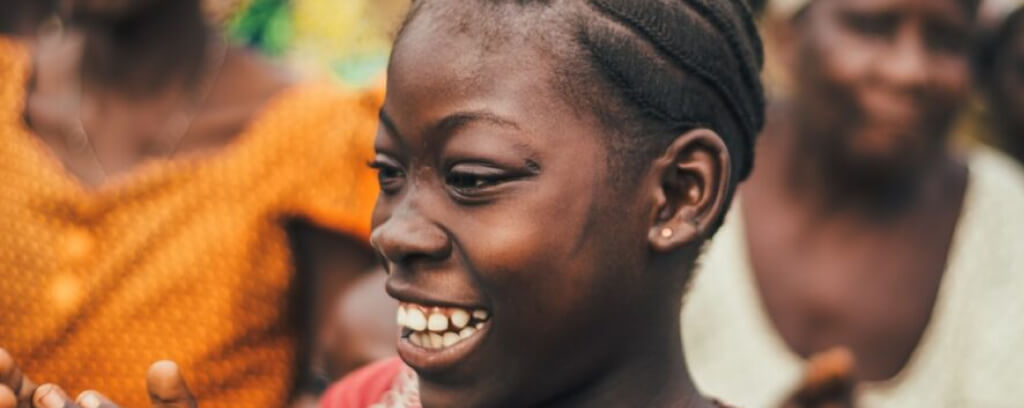
What does the acronym “ACReSAL” stand for?
The acronym “ACReSAL” stands for Agro-Climatic Resilience in Semi-Arid Landscapes. It is a World Bank assisted Project aimed at addressing the challenges of land degradation and climate Change in Northern Nigeria on a multi-dimensional scale.

Our Mission
To address environmental challenges arising from Climate Change and poor land-use practices in Northern Nigeria.

Outcomes - Intermediate Results Indicator
Component A
-
Component A
-
Component B
-
Component C
Component A: Dryland Management
| S/No | Indicator Name | Baseline | June 2024 | Actual Dec 2024 | Year 3 Target | Project End Target (2028) | ||||||||||||||
|---|---|---|---|---|---|---|---|---|---|---|---|---|---|---|---|---|---|---|---|---|
|
||||||||||||||||||||
|
||||||||||||||||||||
|
||||||||||||||||||||
|
||||||||||||||||||||
|
||||||||||||||||||||
Component B: Community Climate Resilience
| S/No | Indicator Name | Baseline | June 2024 | Actual Dec 2024 | Year 3 Target | Project End Target (2028) | ||||||||||||||
|---|---|---|---|---|---|---|---|---|---|---|---|---|---|---|---|---|---|---|---|---|
|
||||||||||||||||||||
|
||||||||||||||||||||
|
||||||||||||||||||||
|
||||||||||||||||||||
|
||||||||||||||||||||
Component C: Institutional Strengthening and Project Management
| S/No | Indicator Name | Baseline | June 2024 | Actual Dec 2024 | Year 3 Target | Project End Target (2028) | ||||||||||||||
|---|---|---|---|---|---|---|---|---|---|---|---|---|---|---|---|---|---|---|---|---|
|
||||||||||||||||||||
|
||||||||||||||||||||
|
||||||||||||||||||||
|
||||||||||||||||||||
ACReSAL Sub-Projects
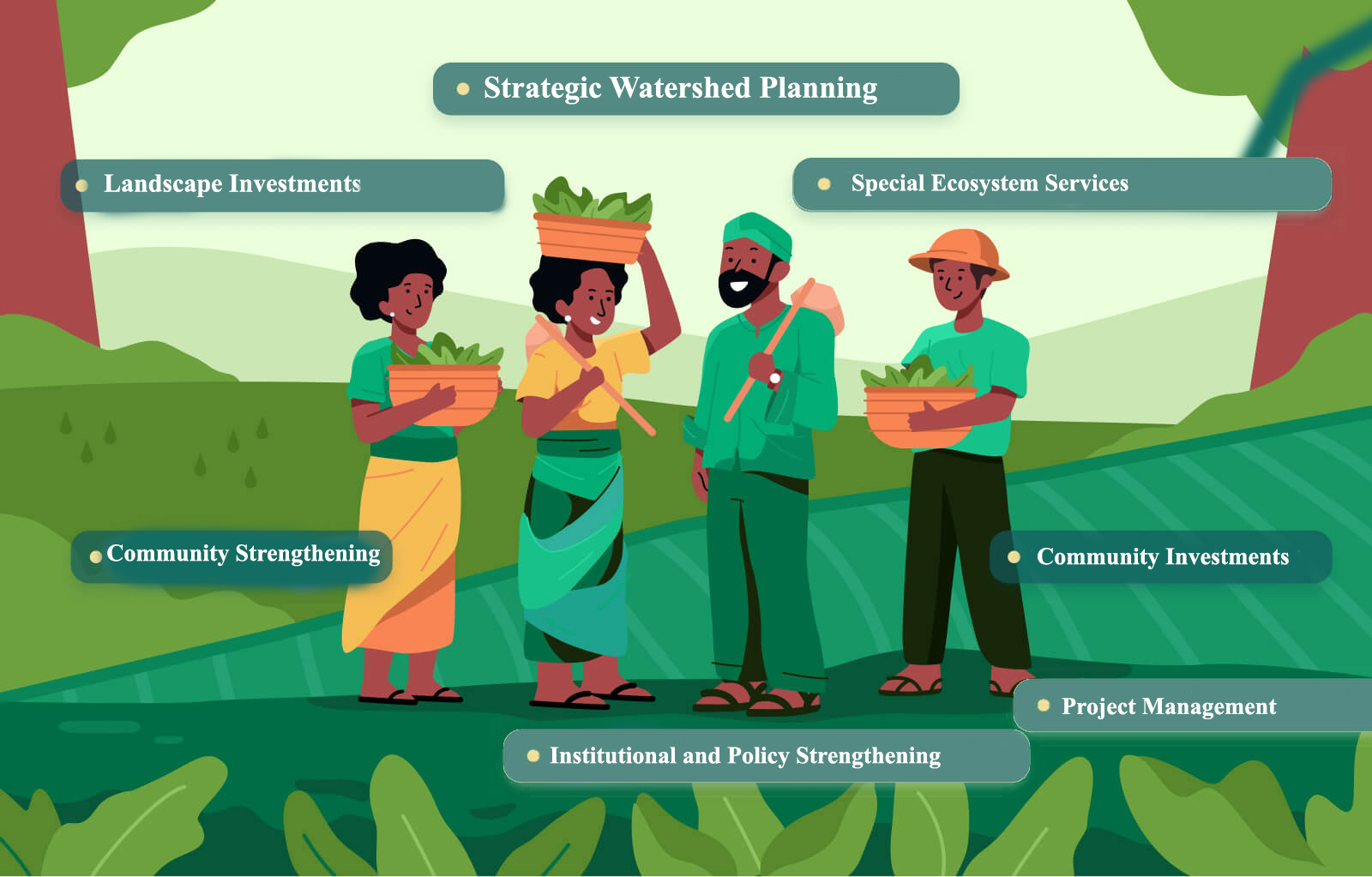

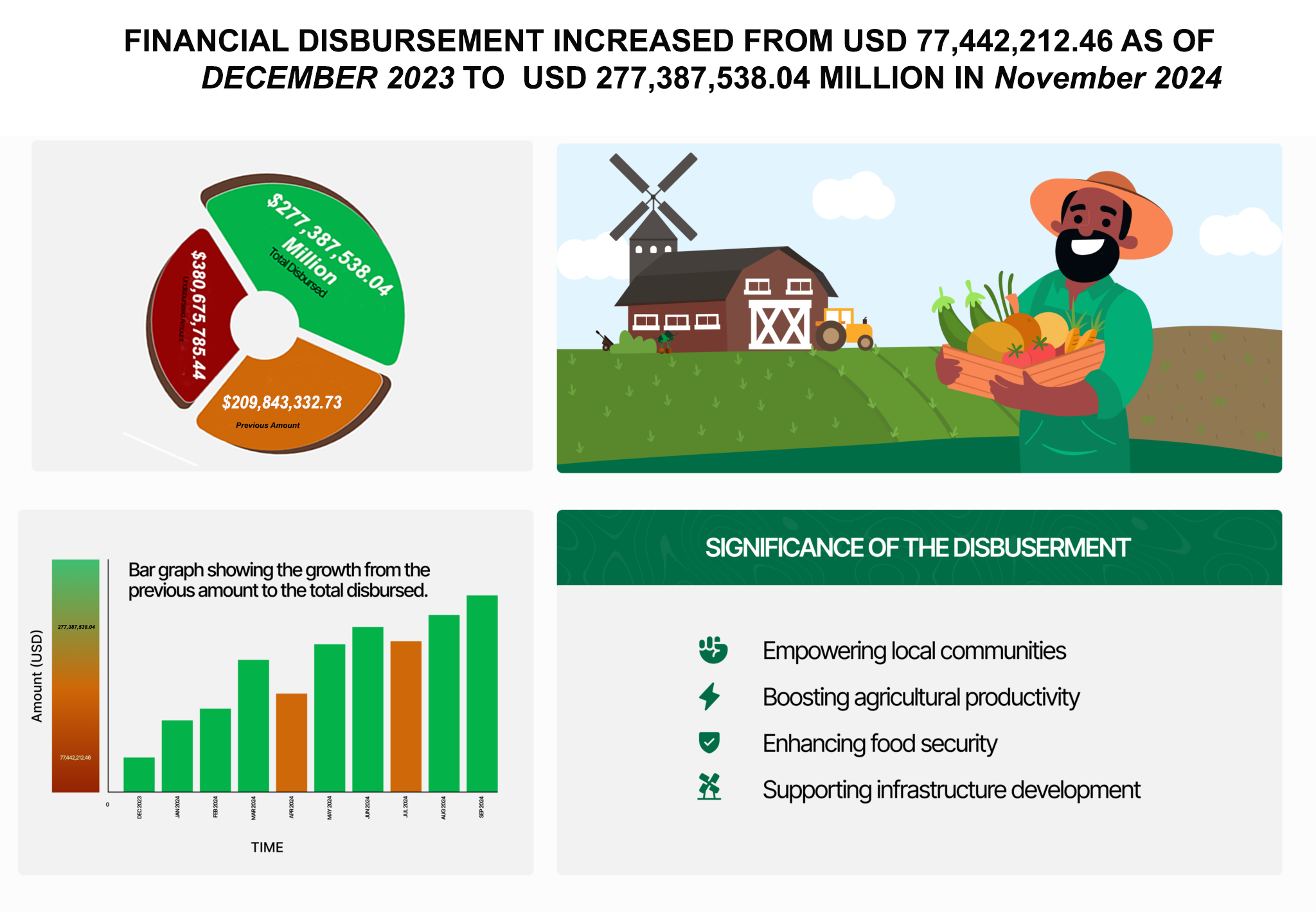

Landscapes Restoration
With an estimated 20-30% of landmass in northern Nigeria degraded by desertification, deforestation and climate factors, the immediate goal of the ACReSAL Project is to restore degraded landscapes and lay the foundation for a long-term enabling environment for integrated climate-resilient landscape management in northern Nigeria.
ACReSAL is committed to restoring 1 million hectares of degraded land by 2030. This includes large-scale tree planting, shelterbelts, and agroforestry projects to combat desertification, contributing to the Federal Government of Nigeria’s commitment of restoring 4 million hectares of degraded land by 2030.
Support Climate-Resilient Agriculture.
This project helps farmers adopt climate-smart practices to improve crop production. It addresses key challenges facing Nigeria’s agriculture sector, including climate change, underinvestment, overexploitation and security threats. Currently, meeting food demand relies heavily on agricultural expansion, which fuels desertification. To break this cycle, our project focuses on water and soil conservation, efficient farm management, and value chain development, that will increase productivity, improve livelihoods, and protect the environment.
Improve Water Access
In regions of northern Nigeria, water scarcity limits agricultural growth and food security. Our project bridges this gap by developing climate-resilient water management systems. We are upgrading infrastructure, including small dams, boreholes, and irrigation networks to ensure reliable access to clean water. This empowers farmers to produce crops year-round, enhancing food security and livelihoods. By integrating flood control measures and community-led initiatives, we’re protecting communities, preserving ecosystems, and fostering resilience. With improved water access, local communities thrive, adapting to climate change and securing a sustainable future.
Empower Community with Real-Time Environmental Risk Communication
With an estimated 70% of dry land challenges found at the grassroot level, availability of reliable sustainable environment management information is critical, hence the communities need the right information, at the right time to enable them foster positive environmental behaviours individually and collectively. Through various media platforms and community engagements, ACReSAL provides risk information to the targeted communities to strengthen their capacities and role towards sustainable environments and development
Enhance Livelihoods
ACReSAL seeks to improve the lives of 3.4 million direct beneficiaries in northern Nigeria, reducing poverty and vulnerability. Through our Community Revolving Fund (CRF) and other initiatives, we are supporting agricultural production, processing, and marketing, lifting millions out of poverty and fostering economic resilience.
Foster Peaceful Coexistence and Conflict Resolution
In northern Nigeria, competition over scarce natural resources fuels farmer-herder conflicts, exacerbated by insurgency, communal clashes, traditional title disputes, and water crises. These tensions drive migration and underdevelopment. ACReSAL addresses this challenge by building capacity for peaceful conflict resolution, establishing inclusive peace architectural platforms, mediating disputes through the Common Ground Approach (CGA), and promoting sustainable environment and development. By fostering collaborative relationships and resolving conflicts, ACReSAL ensures a harmonious and thriving region.
Improve Special Ecosystem Services
The project will also support special ecosystems like National Park Services, in managing protected areas, including Yankari Game Reserve, Jos Wildlife Park, Gombe State Department of Forestry. By revitalizing these ecosystems, we safeguard essential services like water filtration, flood control, and habitat preservation, benefiting local communities and the environment.
Strengthen Institutions for Sustainability
ACReSAL recognizes the critical role of robust institutions in addressing climate change and promoting sustainable development. To ensure long-term project impact, we are supporting policy development and review on climate change, climate smart agriculture, environmental management, and sustainable land use. Institutions will be enhanced with infrastructure, technology, and training to foster community participation in natural resource management. Expected outcomes include improved institutional capacity for climate resilience, an enhanced policy framework for sustainable land and water use, increased community engagement, and sustainable project benefits for future generations. By strengthening institutions, ACReSAL fosters resilience, addresses climate change, and promotes sustainable development in northern Nigeria.
Climate-Smart Rainfed Agriculture
This project provides support to farmers at the household level to optimize climate-smart rainfed agriculture practices, particularly relating to crops. Investments could include water and soil conservation, optimizing farm management (improved crop varieties, Integrated Pest Management; soil and water testing technologies), controlling invasive species, and supporting value chains. Climate change risks include rainfall variability, droughts, floods and increase of average temperature, making rainfed agriculture more vulnerable.
There is significant opportunity to unlock the potential of enhanced rainfed agriculture, thus building climate resilience and moving farmers beyond subsistence farming towards sustainable community level investments specific climate smart rainfed agriculture for farmer/producer groups. Crops cover much of the landscape in the project area (57%) and provide the main source of food and livelihoods.
Yet, crop productivity has been declining due to a series of factors, including underinvestment, overexploitation, a changing climate, and security threats. Agricultural area expansion and imports are the primary means to meeting increasing food demand; yet agricultural expansion is a driver of desertification, which in turn reduces agricultural productivity, generating a vicious circle of overexploitation.
To break this cycle, the project will invest in water and soil conservation, optimizing farm management (improved crop varieties, Integrated Pest Management; soil and water testing technologies), value chain development, and small equipment to increase labor efficiency.
Community Revolving Fund
Community revolving funds (CRFs) present higher potential for sustainability and scaling-up. CRF implemented in World Bank-supported projects at scale, especially in East Africa, to support investments by community-based groups, including farmer groups in micro watersheds. The CRF would be a community level fund to support ACReSAL-supported and registered community/farmer groups to undertake investments for climate-smart rainfed crops interventions.
The registered community/farmer groups will prepare investment/business plans and apply for loans from the CRF. The investment/business plans will be appraised and approved by the local government. The CRF would support ACReSAL registered community/farmer groups in approximately 2800 communities in target watersheds.
To ensure that the CRF is impactful and meets the needs of women, implementation components of the CRF may be piloted under an impact evaluation before potential scale-up within the project.
ACReSAL will kick-start the implementation of CRF in 5-10 pilot states and it will be gradually scaled-up to other states.
Desertification Control
Desertification exacerbates declining agricultural productivity, food insecurity, and poverty challenges in northern Nigeria. Desertification results in soil erosion, loss of soil nutrients, and low retention of soil water, which slows down plant growth and leads to a decline in the productivity of agricultural lands. Desertification is the process of degradation of drylands, such that they become progressively less suitable to support human populations. Specifically, it is defined by the UNCDD as “the degradation of land in arid, semi-arid, and dry sub-humid areas. It is a gradual process of soil productivity loss and the thinning out of the vegetative cover because of human activities and climatic variations, such as prolonged droughts and floods.” Other characteristics include a rise in the reflective capacity (albedo) of the surface for solar radiation, a considerable and permanent loss of perennial plants, especially woody shrubs and trees, increased soil erosion and impoverishment by wind, gully, and sheet erosion of soils by occasional heavy rainfalls.
The Government of Nigeria has established several initiatives in the agricultural sector to combat desertification including afforestation and reforestation programs, dissemination of proven agricultural technologies and sustainable agricultural practices, implementing water management projects such as dams to give sufficient water for users, including livestock, and promotion of efficient energy sources.
Several efforts to stop and reverse desertification are complicated by the need to feed a rapidly increasing population in a region where natural resources are dwindling, and over 90 percent of national food production depends on smallholder farmers who lack the capacity to increase food production without degrading land. The two main causes of desertification and drought are direct human activities and physical factors such as climate change.
Although, many of these efforts initiated by the Government have yielded significant results, and several under the Great Green Wall Sahel-wide initiative of the African Union, there is still a need to create a large scale sustainable natural resources management initiative to address land degradation which has led to drought, desertification, drought and scale-up cost-effective land restoration practices. Thus, the Federal Government of Nigeria has now requested the assistance of the World Bank in addressing this problem of desertification and drought in northern Nigeria.
In light of the foregoing, the Federal Government of Nigeria has, with the support of the World Bank, commenced the implementation of a large-scale investment operation, the Agro-Climatic Resilience in Semi-Arid Landscapes (ACReSAL). This multi-sector project aims to help develop a more integrated, spatial approach to build community resilience as well as improve the sustainable productivity of its natural resources.
The national commitment is evidenced by Nigeria’s intention to restore 4 million hectares of degraded land by 2030 as part of the AFR100 Initiative and the Bonn Challenge. To that effect, a target of 1 million hectares has been set as target for restoration at the end of the ACReSAL project in 2028. This will assist in minimizing the ugly incidences of herders-farmers conflicts. ACReSAL interventions will improve land use planning and help a wide range of communities adapt to evolving dryland conditions with an end target of 3.4 million direct project beneficiaries
Farmer-Led Irrigation Development
North and central Nigeria are rich in shallow groundwater resources, with about 7 million ha of cropland with groundwater resources within a depth of 25 m. The project will support farmers at the household level to increase irrigation, including small-scale solar-powered irrigation.
FLID initiatives are demand-driven, where farmers are provided with information and practical avenues to access the equipment that they need from private sector suppliers. Interventions include knowledge transfer about technology, affordable finance, and linkages to markets. Farmers are encouraged to take up opportunities based on commercial farming with strong private sector involvement (equipment suppliers, financing institutions and market off takers).
Individual irrigation has been promoted in many Government programs, the most well-known being the three FADAMA programs that achieved significant successes. Promoting FLID is one focus of the ACReSAL project because there are substantial natural resources that can be accessed, particularly shallow groundwater, and there is real potential to make a good farming profit from irrigated agriculture especially when using renewable energy resources such as solar.
Forest Management
Forest areas have critical functions in dryland management strategies for maintaining ecosystem integrity, supporting livelihoods, and slowing desertification.
Charcoal production is an economically important sector, but in Nigeria it is considered as one of the major drivers of deforestation (particularly in Bauchi, Kaduna, Nasarawa, Taraba, Ogun, Oyo, Kogi States). Forest Management and Conservation (State and local forests), gazetted forest reserves are under the responsibility of state and local governments.
The project will support the government’s efforts to improve the management and conservation of forests, increase presence of personnel, offices, transportation, communication, management plans, etc. Improved access to fuelwood will be provided by supporting plantations with fast-growing species and to strengthen non-timber forest product value chains for forest-dependent communities. To address challenges identified in the forestry sector, the project will set up a combination of incentive-based agroforestry schemes, agricultural intensification, bush fire control, establishment of fuelwood plantations on degraded gazetted forest lands or in other communal land.
This subcomponent will also support national parks which are considered to be particularly at risk, and which form major parts of the prioritized watersheds under the project.
Landscape Restoration in Community-Selected Degraded Areas
Using an approach pioneered by FAO in both northern Nigeria and other dryland areas in western Africa, using the Delfino plough which mimics the traditional half-moon water harvesting technique. It is composed of hybrid agroforestry models on communal lands which include plant species chosen by the communities, which produce non-timber forestry products, such as: fodder, acacia (gum Arabic), balanites, bee-keeping, nuts, mushrooms, and mixed planting with grains such as millet and sorghum. Improved pasture and rangeland management and restoration could also be included. Prioritized community infrastructure investments can also be supported. In community-selected degraded areas, the project will scale-up a restoration approach pioneered by FAO. The investment activities for community-led landscape restoration for the ACRESAL Project are: Provision of Delfino ploughs, tractors and other equipment. Access to agricultural inputs, sowing, planting, maintenances. Value chain investments (examples: hay, acacia, balanite) → Storage facilities → Support for processing enterprises. Establishing community nurseries for selected agroforestry species. Extension services to support community led landscape restoration activities. Procurement of motorbikes, vehicles and provision of technical assistance (support field activities)
Oasis Restoration
There are over 200 traditional oases in northern Nigeria distributed as follows: Yunusari, Yobe (60 oases), Yusufari Karasuwa, Yobe (61 oases), Sokoto/Kebbi (26 oases), Jigawa (60 oases). 51 Oases are the cradle of cultivars adapted to local conditions and constitute a natural heritage of plants for multiple uses including fodder, condiments, and medicinal and aromatic plants. Over-exploitation, climate change, and the absence of community-based water and land management systems have resulted in the rapid degradation of critical oases. This has had multiple adverse impacts, such as: (a) degradation of ecosystem services, including nutrient cycling, decomposition and soil respiration, water and soil conservation, together with the reduction of biomass for carbon sequestration and gas regulation; (b) loss of unique breeds (or varieties) and their associated diversity, particularly pollinators and soil organisms adapted to local conditions; (c) collapse of a resilient food production base for local and global communities; and (d) out-migration and the resulting conflicts between competing users of over-exploited natural resource bases. The ACReSAL project will focus resources on some of the most vulnerable oases.
Sand Dunes Control
According to Government geological data, there has been a 400 percent increase in sand dunes over the last twenty years. In some cases, these sand dunes cover entire villages, impacting agricultural lands leading to a decline in agricultural outputs and livestock production as well as severe socio-economic impacts (such as loss of livelihood and migration). It has been reported that sand dunes have encroached on 30,000 hectares of land in parts of Yobe State. ACReSAL will target resources to the stabilization of sand dunes. The control of sand dune migration will also stabilize the soil, restore the vegetative cover, improve micro-climates and build resilience of affected communities. Improved vegetative cover will improve carbon sequestration and mitigate climate change. Climate change have amplified the frequency and severity of drifting sand dunes and its effect on many communities in the extreme northern fringes of the country. The control of sand dunes by the project will restore vegetation cover, reverse land degradation and restore soil productivity. These will build resilience of the affected communities to climate change and reduce out-migration. The vegetation cover and stabilized soil will facilitate carbon sequestration. Similarly, the fire control investments and activities under this activity will also reduce GHG emission.
Water Resources Management
The project will invest in water resources management activities, such as, construction of new and/ or rehabilitation of existing small dams/ reservoirs; rehabilitation, replacement and/or decommissioning of deep boreholes; rehabilitation and construction of associated hydraulic infrastructure (including, borehole heads, pumps and meters); and development and/or improvements of irrigation and drainage networks to make water safe and clean water available for irrigation and domestic purposes. Water is a limiting factor to agricultural productivity and food security because the rainy season lasts 3 to 4 months only in most parts of the north. Irrigation will enable farmers to cultivate their lands all year round which will make them nutritionally and economically resilient to climate change. While making water available, this project will also ensure this is done in a safe manner. Therefore, flood and sedimentation control structures such as check dams, levees, retaining walls, embankments, culverts, bridges, concrete channels, grouted riprap, and stream bed rehabilitation, among others would be provided to prevent and mitigate the impacts of floods. The project will also support sensitization, mobilization and organization of communities to manage erosion, control flooding and prevent disasters. These activities will ultimately build resilience of systems and people to climate change.
Wetlands Restoration
For wetland restoration, targeted investments will be carried out in selected wetlands to restore their ecological functions.
Investments will include wetland inventories, definition of buffer protection areas, zoning, banks restoration, monitoring systems, water management, biodiversity conservation, invasive species control, jobs and community microprojects, management, overfishing management, climate change adaption action plans, education campaigns.
Implementation Arrangements for ACReSAL Components & Subs
| Component | Sub Component | Interventions | Specific Activities | Responsibilities | |||||||||||||||||||||||||||||||||||||||||||||||||||||||||||||||||
|---|---|---|---|---|---|---|---|---|---|---|---|---|---|---|---|---|---|---|---|---|---|---|---|---|---|---|---|---|---|---|---|---|---|---|---|---|---|---|---|---|---|---|---|---|---|---|---|---|---|---|---|---|---|---|---|---|---|---|---|---|---|---|---|---|---|---|---|---|---|
|
|||||||||||||||||||||||||||||||||||||||||||||||||||||||||||||||||||||
|
|||||||||||||||||||||||||||||||||||||||||||||||||||||||||||||||||||||
|
|||||||||||||||||||||||||||||||||||||||||||||||||||||||||||||||||||||
|
|||||||||||||||||||||||||||||||||||||||||||||||||||||||||||||||||||||



